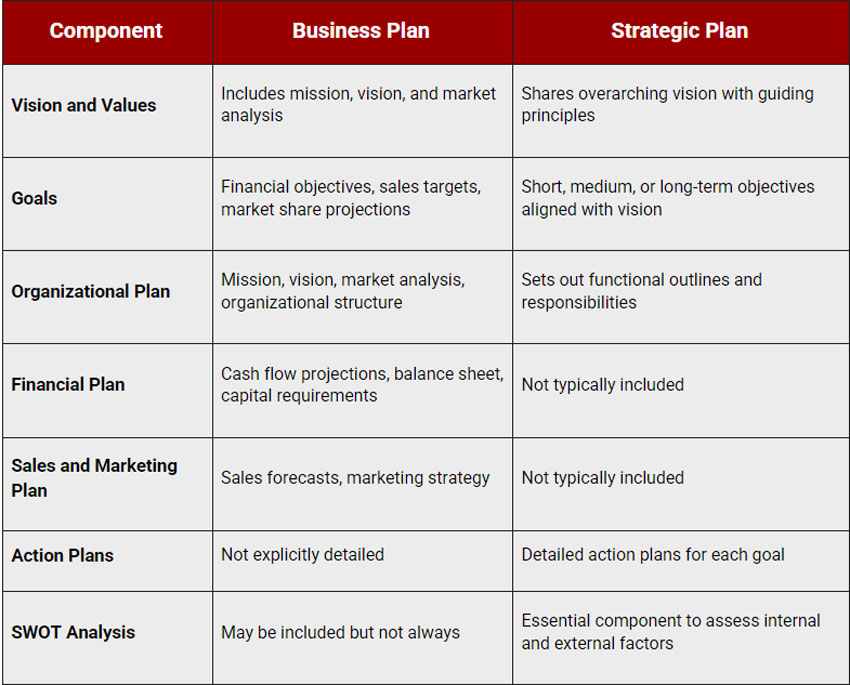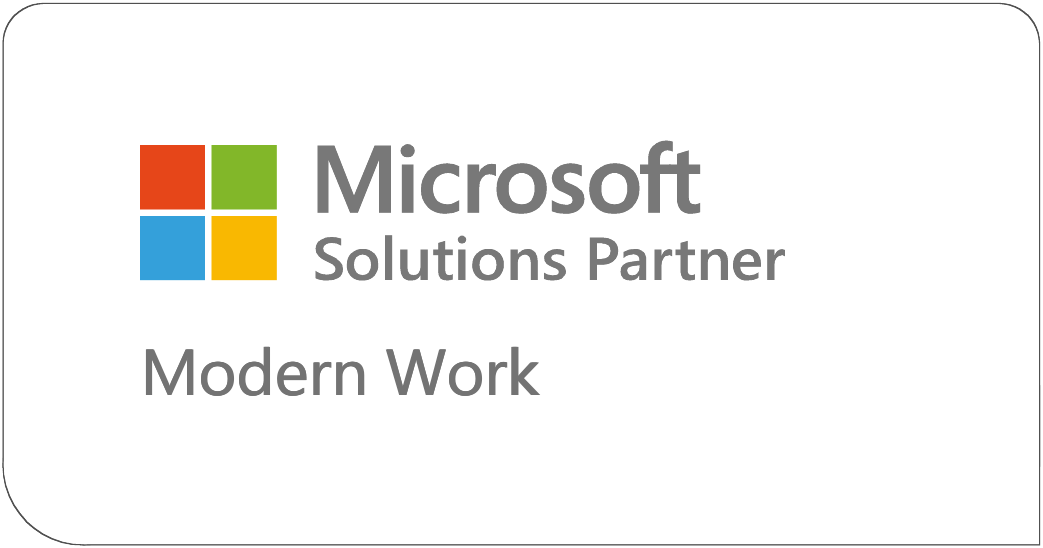
Business Plan Development
Masterplans experts will help you create business plans for investor funding, bank/SBA lending and strategic direction
Investor Materials
A professionally designed pitch deck, lean plan, and cash burn overview will assist you in securing Pre-Seed and Seed Round funding
Immigration Business Plans
A USCIS-compliant business plan serves as the foundation for your E-2, L-1A, EB-5 or E-2 visa application
Customized consulting tailored to your startup's unique challenges and goals
Our team-based approach supports your project with personal communication and technical expertise.
Pricing that is competitive and scalable for early-stage business services regardless of industry or stage.
Client testimonials from just a few of the 18,000+ entrepreneurs we've worked with over the last 20 years
Free tools, research, and templates to help with business plans & pitch decks

Understanding The Distinction Between a Business Plan & Business Planning
In the dynamic world of entrepreneurship, our choice of words matters. Our vocabulary can often become a veritable alphabet soup of jargon, acronyms, and those buzzwords (I'm looking at you, "disrupt").
And let's not get started on business cliches – "circle back," "synergy," “deep-dive,” etc.
Yet sometimes, it's worth pausing to consider the words we casually sprinkle around in our business conversations. In a previous article, we explored the differences between strategic and tactical business planning , two related but distinct approaches to guiding a business. Now, we're going to delve into another pair of terms that often get used interchangeably but have unique implications: "business plan" (the noun) and "business planning" (the verb).
The business plan, a noun, is a tactical document. It's typically created for a specific purpose, such as securing a Small Business Administration (SBA) loan . Think of it as a road map – it outlines the route and the destination (in this case, the coveted bank loan). But once you've reached your tactical goal (in this case, getting the loan), it often gets shoved in the glove compartment, forgotten as part of the organization's action plan until the next road trip (i.e., additional funding ).
Business planning is not a static concept, but rather a dynamic verb. It's an ongoing process that necessitates continual adjustments. It's about creating a holistic, interconnected value-creating strategic plan that benefits all stakeholders. This includes attracting top-tier employees, ensuring a return on lending or investment, and making a positive impact on the community, whether online or in real life.
That being said, the customer remains at the heart of this process. Without customers, there are no sales, no revenue, and no value. Everything else is contingent on this key element.
If we were to compare the business plan to a map, then business planning would be the journey. It's a continuous process of making strategic decisions, adapting to new paths, and steering the business towards its goals. Sometimes, it even involves redefining objectives midway.
So, let's do a "deep-dive" (I couldn't resist) into these two terms, examining their application in the real world. Along the way, we'll uncover some tools that can aid us in the ever-evolving process of strategic business planning and the more finite task of crafting a winning business plan.
The Business Plan is a Document
Alright, let's take a closer look at a phrase we've all tossed around: the business plan. Imagine it as the detailed blueprint of your organization's goals, strategies, and tactics. It's like the North Star for your entrepreneurial ship, shedding light on the key questions: what, why, how, and when (speaking of questions, here are some FAQs about the business plan ).
Writing a solid business plan isn't easy , especially if you're just dipping your toes into the world of business planning. But don’t worry; we'll get to that (eventually).
So, let's break it down. What does a business plan document consist of, exactly?
- Executive Summary: Just as it sounds, this is a quick overview of the nitty-gritty that's in the rest of your business plan. It's the introduction to your organization, highlighting your mission statement and serving up the essential details like ownership, location, and structure.
- Company Overview: This is where you will detail your products and/or services, their pricing, and the operational plan. If you're opening a restaurant, this section is where you present your menu, and it's also where you talk about your ingredient sourcing, the type of service you'll provide, and the ambiance you're aiming for.
- Market Analysis Summary: This section demands a comprehensive analysis of your industry, target market, competitors, and your unique selling proposition. Without access to top-notch (and often not free) research tools, it can be challenging to find current industry data. Check out our guide on the best market research tools to get started.
- Strategy and Implementation Summary: Here, you'll lay out your short-term and long-term objectives along with the strategies you'll implement to attract and retain customers. This is where you’ll talk about all the different marketing and sales strategies you'll use to charm your future customers.
- Management Summary: This is your chance to spotlight your company's key personnel. Detail the profiles of your key leaders, their roles, and why they're perfect for it. Don't shy away from acknowledging talent gaps that need to be filled, and do share how you plan to fill them!
- Pro Forma Financials: This is where you get down to the dollars and cents with a detailed five-year revenue forecast along with crucial financial statements like the balance sheet and the profit & loss statement.
A business plan is an essential instrument, not just for securing funding, but also for communicating long-term goals and objectives to key stakeholders. But, while a business plan is essential for many circumstances, it's important to understand its scope and limitations. It's a tactical tool, an important one, but it's not the be-all and end-all of business strategy. Which brings us to our next point of discussion: business planning.
Business Planning is a Process
If we view the business plan as a blueprint, then business planning is the architect. But let's be clear: we're not building just any old house here. We're building the Winchester Mystery House of business. Just as the infamous Winchester House was constantly under construction , with new rooms being added and old ones revamped, so too is your business in a state of perpetual evolution. It's a dynamic, ongoing process, not a one-and-done event.
In the realm of business planning, we're always adding 'rooms' and 'corridors' – new products, services, and market strategies – to our 'house'. And just as Sarah Winchester reputedly consulted spirits in her Séance Room to guide her construction decisions, we consult our customers, market data, and strategic insights to guide our strategy. We're in a constant state of assessing, evolving, executing, and improving.
Business planning touches all corners of your venture. It includes areas such as product development, market research, and strategic management. It's not about predicting the future with absolute certainty – we’re planners, not fortune tellers. It's about setting a course and making calculated decisions, preparing to pivot when circumstances demand it (think global pandemics).
Business planning is not a 'set it and forget it' endeavor. It's akin to being your company's personal fitness coach, nudging it to continually strive for better. Much like physical fitness, if you stop the maintenance, you risk losing your hard-earned progress.
Business Planning Case Study: Solo Stove
Now that summer is here, my Solo Stove stands as a tangible testament to effective business planning.
For those unfamiliar, Solo Stove started with a simple yet innovative product – a smoke-limiting outdoor fire pit that garnered over $1.1 million on Kickstarter in 2016, far exceeding its original objective. Since then, it has expanded its portfolio with products tailored to outdoor enthusiasts. From flame screens and fire tools to color-changing flame additives, each product is designed to fit seamlessly into modern outdoor spaces, exuding a rugged elegance that resonates with their target audience.
This strategic product development, a cornerstone of business planning, has allowed Solo Stove to evolve from a product to a lifestyle brand. By continually listening to their customers, probing their desires and needs, and innovating to meet those needs, they've built a brand that extends beyond the products they sell.
Their strategy also includes a primary "Direct To Consumer" (DTC) revenue model, executed via their e-commerce website. This model, while challenging due to increased customer acquisition costs, offers significant benefits, including higher margins since revenue isn’t split with a retailer or distributor, and direct interaction with the customer.
Through its primary business model, Solo Stove has amassed an email database of over 3.4 million customers . This competitive advantage allows for ongoing evaluation of customer needs, driving product innovation and improvement, and enabling effective marketing that strengthens their mission. The success of this approach is evident in the company's growth: from 2018 to 2020, Solo Stove’s revenue grew from $16 million to $130 million , a 185% CAGR.
While 85% of their revenue comes from online DTC channels, Solo Stove has also enhanced their strategic objectives by partnering with select retailers that align with their reputation, demographic, and commitment to showcasing Solo Brands’ product portfolio and providing superior customer service.
Solo Stove's success underscores how comprehensive business planning fosters regular assessment, constant evolution, and continual improvement. It's more than setting goals – it's about ceaselessly uncovering ways to deliver value to your customers and grow your business.
However, even successful businesses like Solo Stove can explore additional strategic initiatives for growth and diversification, aligning with their strategic direction and operational planning. For instance, a subscription model could provide regular deliveries of products or a service warranty, creating a consistent revenue stream and increasing customer loyalty. Alternatively, a B2B model could involve partnerships with adventure tourism operators, who could purchase Solo Stove products in bulk.
These complementary business models, when integrated into the operational plan, could support the primary DTC model by driving customer acquisition, providing ongoing revenue streams and expanding the customer base. This strategic direction ensures that Solo Stove continues to thrive in a competitive market.
The Interplay between the Business Plan (Noun) and Business Planning (Verb)
In the realm of business strategy, there's an intriguing chicken-and-egg conundrum: which comes first, the business plan or business planning? The answer is both straightforward and complex: they're two sides of the same coin, each indispensable in its own right and yet inextricably linked.
The process of business planning informs and modifies the business plan, just as the business plan provides a strategic foundation for the planning process. This interplay embodies the concept of Model-Based Planning™, where the business model serves as a guide, yet remains flexible to the insights and adaptations borne out of proactive business planning.
Let's revisit the Solo Stove story to elucidate this concept. Their business model, primarily direct-to-consumer, laid the groundwork for their strategy. Yet, it was through continuous business planning – the assessment of customer feedback, market trends, and sales performance – that they were able to refine their model, expand their product portfolio, and enhance their growth objectives. Their business plan wasn't a static document but a living entity, evolving through the insights gleaned from ongoing business planning.
So, how can you harness the power of both the tactical business plan and strategic business planning in your organization? Here are a few guiding principles:
- Embrace Model-Based Planning™: Start with a robust business model that outlines your strategic plan. But remember, this isn't set in stone—it's a guiding framework that will evolve over time as you gain insights from your strategic planning process.
- Make business planning a routine: Regularly review and update your business plan based on your findings from market research, customer feedback, and internal assessments. Use it as a living document that grows and adapts with your business.
- Foster open communication: Keep all stakeholders informed about updates to your business plan and the insights that informed these changes. This promotes alignment and ensures everyone is working towards the same goals.
- Be agile and adaptable: A key part of business planning is being ready to pivot when necessary . Whether it's a global pandemic or a shift in consumer preferences, your ability to respond swiftly and strategically to changing circumstances is crucial for long-term success.
Fanning the Flames: From Planning to Plan
The sparks truly ignite when you understand the symbiotic relationship between tactical business plans, strategic business planning, and the achievement of strategic goals. Crafting a tactical business plan (the noun) requires initial planning (the verb), but then you need to embark on continuous strategic planning (the verb) to review, refine, and realign your strategic business plan (the noun). It's a rhythm of planning, execution, review, and adjustment, all guided by key performance indicators.
Business planning, therefore, isn't a one-off event, but rather an active, ongoing process. A business plan needs constant nurturing and adjustment to stay relevant and guide your organization's path to success. This understanding frames your business plan not as a static document, but as a living, breathing entity, evolving with each step your business takes and each shift in the business landscape. It's a strategic roadmap, continually updated to reflect your organization's objectives and the ever-changing business environment.

How to Write a Management Summary for Your Business Plan
Entrepreneurs are often celebrated for their uncanny ability to understand others – their customers, the market, and the ever-evolving global...

Understanding Venture Debt vs Venture Capital
Despite growth in sectors like artificial intelligence, venture capital funding has seen better days. After peaking at $347.5 billion in 2021, there...

Going Beyond Writing: The Multifaceted Role of Business Plan Consultants
Most people think of a professional business plan company primarily as a "business plan writer." However, here at Masterplans, we choose to approach...
- Search Search Please fill out this field.
What Is a Business Plan?
Understanding business plans, how to write a business plan, common elements of a business plan, how often should a business plan be updated, the bottom line, business plan: what it is, what's included, and how to write one.
Adam Hayes, Ph.D., CFA, is a financial writer with 15+ years Wall Street experience as a derivatives trader. Besides his extensive derivative trading expertise, Adam is an expert in economics and behavioral finance. Adam received his master's in economics from The New School for Social Research and his Ph.D. from the University of Wisconsin-Madison in sociology. He is a CFA charterholder as well as holding FINRA Series 7, 55 & 63 licenses. He currently researches and teaches economic sociology and the social studies of finance at the Hebrew University in Jerusalem.
:max_bytes(150000):strip_icc():format(webp)/adam_hayes-5bfc262a46e0fb005118b414.jpg)
A business plan is a document that details a company's goals and how it intends to achieve them. Business plans can be of benefit to both startups and well-established companies. For startups, a business plan can be essential for winning over potential lenders and investors. Established businesses can find one useful for staying on track and not losing sight of their goals. This article explains what an effective business plan needs to include and how to write one.
Key Takeaways
- A business plan is a document describing a company's business activities and how it plans to achieve its goals.
- Startup companies use business plans to get off the ground and attract outside investors.
- For established companies, a business plan can help keep the executive team focused on and working toward the company's short- and long-term objectives.
- There is no single format that a business plan must follow, but there are certain key elements that most companies will want to include.
Investopedia / Ryan Oakley
Any new business should have a business plan in place prior to beginning operations. In fact, banks and venture capital firms often want to see a business plan before they'll consider making a loan or providing capital to new businesses.
Even if a business isn't looking to raise additional money, a business plan can help it focus on its goals. A 2017 Harvard Business Review article reported that, "Entrepreneurs who write formal plans are 16% more likely to achieve viability than the otherwise identical nonplanning entrepreneurs."
Ideally, a business plan should be reviewed and updated periodically to reflect any goals that have been achieved or that may have changed. An established business that has decided to move in a new direction might create an entirely new business plan for itself.
There are numerous benefits to creating (and sticking to) a well-conceived business plan. These include being able to think through ideas before investing too much money in them and highlighting any potential obstacles to success. A company might also share its business plan with trusted outsiders to get their objective feedback. In addition, a business plan can help keep a company's executive team on the same page about strategic action items and priorities.
Business plans, even among competitors in the same industry, are rarely identical. However, they often have some of the same basic elements, as we describe below.
While it's a good idea to provide as much detail as necessary, it's also important that a business plan be concise enough to hold a reader's attention to the end.
While there are any number of templates that you can use to write a business plan, it's best to try to avoid producing a generic-looking one. Let your plan reflect the unique personality of your business.
Many business plans use some combination of the sections below, with varying levels of detail, depending on the company.
The length of a business plan can vary greatly from business to business. Regardless, it's best to fit the basic information into a 15- to 25-page document. Other crucial elements that take up a lot of space—such as applications for patents—can be referenced in the main document and attached as appendices.
These are some of the most common elements in many business plans:
- Executive summary: This section introduces the company and includes its mission statement along with relevant information about the company's leadership, employees, operations, and locations.
- Products and services: Here, the company should describe the products and services it offers or plans to introduce. That might include details on pricing, product lifespan, and unique benefits to the consumer. Other factors that could go into this section include production and manufacturing processes, any relevant patents the company may have, as well as proprietary technology . Information about research and development (R&D) can also be included here.
- Market analysis: A company needs to have a good handle on the current state of its industry and the existing competition. This section should explain where the company fits in, what types of customers it plans to target, and how easy or difficult it may be to take market share from incumbents.
- Marketing strategy: This section can describe how the company plans to attract and keep customers, including any anticipated advertising and marketing campaigns. It should also describe the distribution channel or channels it will use to get its products or services to consumers.
- Financial plans and projections: Established businesses can include financial statements, balance sheets, and other relevant financial information. New businesses can provide financial targets and estimates for the first few years. Your plan might also include any funding requests you're making.
The best business plans aren't generic ones created from easily accessed templates. A company should aim to entice readers with a plan that demonstrates its uniqueness and potential for success.
2 Types of Business Plans
Business plans can take many forms, but they are sometimes divided into two basic categories: traditional and lean startup. According to the U.S. Small Business Administration (SBA) , the traditional business plan is the more common of the two.
- Traditional business plans : These plans tend to be much longer than lean startup plans and contain considerably more detail. As a result they require more work on the part of the business, but they can also be more persuasive (and reassuring) to potential investors.
- Lean startup business plans : These use an abbreviated structure that highlights key elements. These business plans are short—as short as one page—and provide only the most basic detail. If a company wants to use this kind of plan, it should be prepared to provide more detail if an investor or a lender requests it.
Why Do Business Plans Fail?
A business plan is not a surefire recipe for success. The plan may have been unrealistic in its assumptions and projections to begin with. Markets and the overall economy might change in ways that couldn't have been foreseen. A competitor might introduce a revolutionary new product or service. All of this calls for building some flexibility into your plan, so you can pivot to a new course if needed.
How frequently a business plan needs to be revised will depend on the nature of the business. A well-established business might want to review its plan once a year and make changes if necessary. A new or fast-growing business in a fiercely competitive market might want to revise it more often, such as quarterly.
What Does a Lean Startup Business Plan Include?
The lean startup business plan is an option when a company prefers to give a quick explanation of its business. For example, a brand-new company may feel that it doesn't have a lot of information to provide yet.
Sections can include: a value proposition ; the company's major activities and advantages; resources such as staff, intellectual property, and capital; a list of partnerships; customer segments; and revenue sources.
A business plan can be useful to companies of all kinds. But as a company grows and the world around it changes, so too should its business plan. So don't think of your business plan as carved in granite but as a living document designed to evolve with your business.
Harvard Business Review. " Research: Writing a Business Plan Makes Your Startup More Likely to Succeed ."
U.S. Small Business Administration. " Write Your Business Plan ."
- How to Start a Business: A Comprehensive Guide and Essential Steps 1 of 25
- How to Do Market Research, Types, and Example 2 of 25
- Marketing Strategy: What It Is, How It Works, and How to Create One 3 of 25
- Marketing in Business: Strategies and Types Explained 4 of 25
- What Is a Marketing Plan? Types and How to Write One 5 of 25
- Business Development: Definition, Strategies, Steps & Skills 6 of 25
- Business Plan: What It Is, What's Included, and How to Write One 7 of 25
- Small Business Development Center (SBDC): Meaning, Types, Impact 8 of 25
- How to Write a Business Plan for a Loan 9 of 25
- Business Startup Costs: It’s in the Details 10 of 25
- Startup Capital Definition, Types, and Risks 11 of 25
- Bootstrapping Definition, Strategies, and Pros/Cons 12 of 25
- Crowdfunding: What It Is, How It Works, and Popular Websites 13 of 25
- Starting a Business with No Money: How to Begin 14 of 25
- A Comprehensive Guide to Establishing Business Credit 15 of 25
- Equity Financing: What It Is, How It Works, Pros and Cons 16 of 25
- Best Startup Business Loans for April 2024 17 of 25
- Sole Proprietorship: What It Is, Pros and Cons, and Differences From an LLC 18 of 25
- Partnership: Definition, How It Works, Taxation, and Types 19 of 25
- What Is an LLC? Limited Liability Company Structure and Benefits Defined 20 of 25
- Corporation: What It Is and How to Form One 21 of 25
- Starting a Small Business: Your Complete How-to Guide 22 of 25
- Starting an Online Business: A Step-by-Step Guide 23 of 25
- How to Start Your Own Bookkeeping Business: Essential Tips 24 of 25
- How to Start a Successful Dropshipping Business: A Comprehensive Guide 25 of 25
:max_bytes(150000):strip_icc():format(webp)/GettyImages-1456193345-2cc8ef3d583f42d8a80c8e631c0b0556.jpg)
- Terms of Service
- Editorial Policy
- Privacy Policy
- Your Privacy Choices
What is a Business Plan? Definition and Resources

9 min. read
Updated April 10, 2024
If you’ve ever jotted down a business idea on a napkin with a few tasks you need to accomplish, you’ve written a business plan — or at least the very basic components of one.
The origin of formal business plans is murky. But they certainly go back centuries. And when you consider that 20% of new businesses fail in year 1 , and half fail within 5 years, the importance of thorough planning and research should be clear.
But just what is a business plan? And what’s required to move from a series of ideas to a formal plan? Here we’ll answer that question and explain why you need one to be a successful business owner.
- What is a business plan?

A business plan lays out a strategic roadmap for any new or growing business.
Any entrepreneur with a great idea for a business needs to conduct market research , analyze their competitors , validate their idea by talking to potential customers, and define their unique value proposition .
The business plan captures that opportunity you see for your company: it describes your product or service and business model , and the target market you’ll serve.
It also includes details on how you’ll execute your plan: how you’ll price and market your solution and your financial projections .
Reasons for writing a business plan
If you’re asking yourself, ‘Do I really need to write a business plan?’ consider this fact:
Companies that commit to planning grow 30% faster than those that don’t.
Creating a business plan is crucial for businesses of any size or stage.
If you plan to raise funds for your business through a traditional bank loan or SBA loan , none of them will want to move forward without seeing your business plan. Venture capital firms may or may not ask for one, but you’ll still need to do thorough planning to create a pitch that makes them want to invest.
But it’s more than just a means of getting your business funded . The plan is also your roadmap to identify and address potential risks.
It’s not a one-time document. Your business plan is a living guide to ensure your business stays on course.
Related: 14 of the top reasons why you need a business plan
Brought to you by
Create a professional business plan
Using ai and step-by-step instructions.
Secure funding
Validate ideas
Build a strategy
What research shows about business plans
Numerous studies have established that planning improves business performance:
- 71% of fast-growing companies have business plans that include budgets, sales goals, and marketing and sales strategies.
- Companies that clearly define their value proposition are more successful than those that can’t.
- Companies or startups with a business plan are more likely to get funding than those without one.
- Starting the business planning process before investing in marketing reduces the likelihood of business failure.
The planning process significantly impacts business growth for existing companies and startups alike.
Read More: Research-backed reasons why writing a business plan matters
When should you write a business plan?
No two business plans are alike.
Yet there are similar questions for anyone considering writing a plan to answer. One basic but important question is when to start writing it.
A Harvard Business Review study found that the ideal time to write a business plan is between 6 and 12 months after deciding to start a business.
But the reality can be more nuanced – it depends on the stage a business is in, or the type of business plan being written.
Ideal times to write a business plan include:
- When you have an idea for a business
- When you’re starting a business
- When you’re preparing to buy (or sell)
- When you’re trying to get funding
- When business conditions change
- When you’re growing or scaling your business
Read More: The best times to write or update your business plan
How often should you update your business plan?
As is often the case, how often a business plan should be updated depends on your circumstances.
A business plan isn’t a homework assignment to complete and forget about. At the same time, no one wants to get so bogged down in the details that they lose sight of day-to-day goals.
But it should cover new opportunities and threats that a business owner surfaces, and incorporate feedback they get from customers. So it can’t be a static document.
For an entrepreneur at the ideation stage, writing and checking back on their business plan will help them determine if they can turn that idea into a profitable business .
And for owners of up-and-running businesses, updating the plan (or rewriting it) will help them respond to market shifts they wouldn’t be prepared for otherwise.
It also lets them compare their forecasts and budgets to actual financial results. This invaluable process surfaces where a business might be out-performing expectations and where weak performance may require a prompt strategy change.
The planning process is what uncovers those insights.
Related Reading: 10 prompts to help you write a business plan with AI
- How long should your business plan be?
Thinking about a business plan strictly in terms of page length can risk overlooking more important factors, like the level of detail or clarity in the plan.
Not all of the plan consists of writing – there are also financial tables, graphs, and product illustrations to include.
But there are a few general rules to consider about a plan’s length:
- Your business plan shouldn’t take more than 15 minutes to skim.
- Business plans for internal use (not for a bank loan or outside investment) can be as short as 5 to 10 pages.
A good practice is to write your business plan to match the expectations of your audience.
If you’re walking into a bank looking for a loan, your plan should match the formal, professional style that a loan officer would expect . But if you’re writing it for stakeholders on your own team—shorter and less formal (even just a few pages) could be the better way to go.
The length of your plan may also depend on the stage your business is in.
For instance, a startup plan won’t have nearly as much financial information to include as a plan written for an established company will.
Read More: How long should your business plan be?
What information is included in a business plan?
The contents of a plan business plan will vary depending on the industry the business is in.
After all, someone opening a new restaurant will have different customers, inventory needs, and marketing tactics to consider than someone bringing a new medical device to the market.
But there are some common elements that most business plans include:
- Executive summary: An overview of the business operation, strategy, and goals. The executive summary should be written last, despite being the first thing anyone will read.
- Products and services: A description of the solution that a business is bringing to the market, emphasizing how it solves the problem customers are facing.
- Market analysis: An examination of the demographic and psychographic attributes of likely customers, resulting in the profile of an ideal customer for the business.
- Competitive analysis: Documenting the competitors a business will face in the market, and their strengths and weaknesses relative to those competitors.
- Marketing and sales plan: Summarizing a business’s tactics to position their product or service favorably in the market, attract customers, and generate revenue.
- Operational plan: Detailing the requirements to run the business day-to-day, including staffing, equipment, inventory, and facility needs.
- Organization and management structure: A listing of the departments and position breakdown of the business, as well as descriptions of the backgrounds and qualifications of the leadership team.
- Key milestones: Laying out the key dates that a business is projected to reach certain milestones , such as revenue, break-even, or customer acquisition goals.
- Financial plan: Balance sheets, cash flow forecast , and sales and expense forecasts with forward-looking financial projections, listing assumptions and potential risks that could affect the accuracy of the plan.
- Appendix: All of the supporting information that doesn’t fit into specific sections of the business plan, such as data and charts.
Read More: Use this business plan outline to organize your plan
- Different types of business plans
A business plan isn’t a one-size-fits-all document. There are numerous ways to create an effective business plan that fits entrepreneurs’ or established business owners’ needs.
Here are a few of the most common types of business plans for small businesses:
- One-page plan : Outlining all of the most important information about a business into an adaptable one-page plan.
- Growth plan : An ongoing business management plan that ensures business tactics and strategies are aligned as a business scales up.
- Internal plan : A shorter version of a full business plan to be shared with internal stakeholders – ideal for established companies considering strategic shifts.
Business plan vs. operational plan vs. strategic plan
- What questions are you trying to answer?
- Are you trying to lay out a plan for the actual running of your business?
- Is your focus on how you will meet short or long-term goals?
Since your objective will ultimately inform your plan, you need to know what you’re trying to accomplish before you start writing.
While a business plan provides the foundation for a business, other types of plans support this guiding document.
An operational plan sets short-term goals for the business by laying out where it plans to focus energy and investments and when it plans to hit key milestones.
Then there is the strategic plan , which examines longer-range opportunities for the business, and how to meet those larger goals over time.
Read More: How to use a business plan for strategic development and operations
- Business plan vs. business model
If a business plan describes the tactics an entrepreneur will use to succeed in the market, then the business model represents how they will make money.
The difference may seem subtle, but it’s important.
Think of a business plan as the roadmap for how to exploit market opportunities and reach a state of sustainable growth. By contrast, the business model lays out how a business will operate and what it will look like once it has reached that growth phase.
Learn More: The differences between a business model and business plan
- Moving from idea to business plan
Now that you understand what a business plan is, the next step is to start writing your business plan .
The best way to start is by reviewing examples and downloading a business plan template. These resources will provide you with guidance and inspiration to help you write a plan.
We recommend starting with a simple one-page plan ; it streamlines the planning process and helps you organize your ideas. However, if one page doesn’t fit your needs, there are plenty of other great templates available that will put you well on your way to writing a useful business plan.
See why 1.2 million entrepreneurs have written their business plans with LivePlan
Tim Berry is the founder and chairman of Palo Alto Software , a co-founder of Borland International, and a recognized expert in business planning. He has an MBA from Stanford and degrees with honors from the University of Oregon and the University of Notre Dame. Today, Tim dedicates most of his time to blogging, teaching and evangelizing for business planning.

Table of Contents
- Reasons to write a business plan
- Business planning research
- When to write a business plan
- When to update a business plan
- Information to include
- Business vs. operational vs. strategic plans
Related Articles

7 Min. Read
3 Key Steps to Create a Promotional Plan

8 Min. Read
How to Write a Home Health Care Business Plan

10 Min. Read
How to Set and Use Milestones in Your Business Plan

6 Min. Read
Do This One Thing Before You Write Your Business Plan
The Bplans Newsletter
The Bplans Weekly
Subscribe now for weekly advice and free downloadable resources to help start and grow your business.
We care about your privacy. See our privacy policy .

The quickest way to turn a business idea into a business plan
Fill-in-the-blanks and automatic financials make it easy.
No thanks, I prefer writing 40-page documents.

Discover the world’s #1 plan building software

- Certifications
- Associate Business Strategy Professional
- Senior Business Strategy Professional
- Examination
- Partnership
- For Academic Affiliation
- For Training Companies
- For Corporates
- Help Center
- Associate Business Strategy Professional (ABSP™)
- Senior Business Strategy Professional (SBSP™)
- Certification Process
- TSI Certification Examination
- Get your Institution TSI Affiliated
- Become a Corporate Education Partner
- Become a Strategy Educator
- Frequently Asked Questions
Business plan vs Strategic Plan - What You Must Know

Like everything else in life, the nature of business needs a plan in place to follow and measure. Crafting a strategic roadmap isn't just a suggestion—it's a necessity.
This is one of the key elements of a startup or even a business division within an organization that is expanding or diversifying. It has every resource element and needs to be mapped out for the business, including projected milestones for the future.
However, every business strategist needs to know that there are some subtle differences between what constitutes a business plan, and the several differences it has with a strategic plan. Let’s walk through the different elements that comprise each and understand the outcome each aims to achieve.
Introducing The Business Plan
A business plan is exactly what the name suggests— a plan to start and run a business or a new entity of an existing business; usually either an expansion in a newer region or a diversification into a new market. Business plans are mainly created for internal reference purposes or external funding purposes, with the latter being the common usage. They form the basis of all business strategies and decisions made at the ownership level in an organization. The most essential components of a business plan include:
Organizational Plan - This is the core of a business plan, and it includes the mission and vision statement, along with the market in which the company plans to operate. This plan also encompasses thorough market research to gauge the potential of the business, crucial for securing funding or sponsorship. It articulates the rationale behind the business's growth trajectory, outlining clear timelines for achieving milestones along the way.
Financial Plan - A robust financial plan is the bedrock of any successful business venture, where cash flow reigns supreme, and a meticulously crafted balance sheet serves as the ultimate scorecard. A financial plan includes some of the most important elements of the entire business plan and includes elements like projected cash flow statements, capital requirements, a summary of projected overheads, a projected balance sheet including assets and liabilities, and income and expense statements.
Remember to regard this as the central nervous system, for it permeates and influences almost every aspiration the enterprise hopes to attain.
Sales and Marketing Plan - We mentioned “almost” everything above for this very reason. Sales and marketing form the other significant component of the business plan. These include sales forecasts and overheads, marketing and brand management summaries, and market share projections that the business hopes to achieve within a time frame.
Business plans are indeed comprehensive and all-encompassing. They form the basis of the business's existence or the rationale for investments in it. But what about translating these plans into action? How do we ensure that the sky-high goals set forth are actually achievable?
The Actionables- A Strategic Plan
Strategic plans constitute the basis of operations and responsibilities within the business. These plans lay the paths out for each member of the organization to follow and define the functional outline and the key outcomes for every project and process within the business. A strategic plan goes on to define the operations and their outcomes within the organization, its departments, and its employees. The single thread connecting strategic planning with the business plan is the vision of the organization, and for obvious reasons— vision serves as the guiding light for strategy formation, which, in turn, directs the day-to-day operations of the business.
Why A Strategic Plan is Crucial to The Organization
In a word— synchronization. A robust and well-laid-out strategic plan establishes the much-needed sync between teams and their objectives. Not only that, it also provides a guide for daily operations alongside the focus and direction that teams often need to get the job done, on time and within budget. When all these components are integrated into a cohesive network, the true value of a strategic plan emerges—a seamless and grand orchestration of departments, teams, and individuals using the resources allocated to them to achieve the key performance indicator that they are responsible for.
Elements to Consider in a Strategic Plan
When tasked with creating a strategic plan for your business, you will need to incorporate certain components that will ensure that the stakeholders are aligned completely with the organization’s goals and objectives. These include:
Vision and Values - The vision statement is the most important component of the strategic plan and the most overarching. It propels the organization towards established goals and the values that every employee and stakeholder must incorporate.
Goals - These are short, medium, or long-term, depending on the scope of the strategic plan. They provide the much-needed context for the organization to undertake initiatives that meet the vision while maintaining the values.
Guiding Principles - Often, organizations face crossroads where they must decide which steps to take next, to reach their vision. Principles are included in strategic plans to align teams towards the vision when faced with a dilemma and form a critical part of strategic planning.
Action Plans - A sum of key initiatives, processes, and projects that are required to be performed on a pre-determined periodic basis for the goal to be accomplished. These also include the time frames for each stakeholder responsible for each option. They usually follow the DACI format for each action (Driver, Approver, Contributor, Informed)
SWOT Analysis - The quintessential component, the Strength, Weaknesses, Opportunities, and Threats analysis of the strategic plan lends context to all business actions vis-a-vis the external environment. This includes competitors, market forces and conditions, identification of internal and external threats, and several other factors.
Read This - SWOT Analysis: How to Strengthen Your Business Plan
Here’s a table highlighting the main differences between a Business Plan and a Strategic Plan with a focus on the key components of each—

Learning All About Strategic Planning
In all businesses, a strategic plan serves as the foundational blueprint, akin to a meticulously drawn map for a general. It provides the essential guidance and direction needed for the entire organization to navigate toward success. It is crucial, therefore, to acquire the necessary skills and certifications for employment as a business strategist who would be entrusted with creating it. Know more about how to become a successful and sought-after business strategist today!

Recent Posts

How Data Analytics Can Revolutionize Your Business - A Strategist's Guide
Download this Strategist's Guide to empower yourself with resourceful insights:
- Roadblocks to Data Usage
- Advantages that Data Analytics offer for businesses
- Elements of a Data Analytics Strategy
- Top reasons why businesses must adopt a Data Analytics Strategy
- Case studies, Scenarios, and more

CredBadge™ is a proprietary, secure, digital badging platform that provides for seamless authentication and verification of credentials across digital media worldwide.
CredBadge™ powered credentials ensure that professionals can showcase and verify their qualifications and credentials across all digital platforms, and at any time, across the planet.

Verify A Credential
Please enter the License Number/Unique Credential Code of the certificant. Results will be displayed if the person holds an active credential from TSI.
Stay Informed!
Keep yourself informed on the latest updates and information about business strategy by subscribing to our newsletter.
Start Your Journey with The Strategy Institute by Creating Your myTSI Account Today.
- Manage your professional profile conveniently.
- Manage your credentials anytime.
- Share your experiences and ideas with The Strategy Institute.
Account Login
- Remember Password
- Forgot Password?
Forgot Password
More Like this
What is the difference between a business plan and a strategic plan.
It is not uncommon that the terms ‘strategic plan’ and ‘business plan’ get confused in the business world. While a strategic plan is a type of business plan, there are several important distinctions between the two types that are worth noting. Before beginning your strategic planning process or strategy implementation, look at the article below to learn the key difference between a business vs strategic plan and how each are important to your organization.
Definition of a business plan vs. a strategic plan
A strategic plan is essential for already established organizations looking for a way to manage and implement their strategic direction and future growth. Strategic planning is future-focused and serves as a roadmap to outline where the organization is going over the next 3-5 years (or more) and the steps it will take to get there.
Get the Free Guide for Setting OKRs that Work (with 100 examples!)
A strategic plan serves 6 functions for an organization that is striving to reach the next level of their growth:.
- Defines the purpose of the organization.
- Builds on an organization’s competitive advantages.
- Communicates the strategy to the staff.
- Prioritizes the financial needs of the organization.
- Directs the team to move from plan to action.
- Creates long-term sustainability and growth impact
Alternatively, a business plan is used by new businesses or organizations trying to get off the ground. The fundamentals of a business plan focus on setting the foundation for the business or organization. While it looks towards the future, the focus is set more on the immediate future (>1 year). Some of the functions of a business plan may overlap with a strategic plan. However, the focus and intentions diverge in a few key areas.
A business plan for new businesses, projects, or organizations serves these 5 functions:
- Simplifies or explains the objectives and goals of your organization.
- Coordinates human resource management and determines operational requirements.
- Secures funding for your organization.
- Evaluates potential business prospects.
- Creates a framework for conceptualizing ideas.
In other words, a strategic plan is utilized to direct the momentum and growth of an established company or organization. In contrast, a business plan is meant to set the foundation of a newly (or not quite) developed company by setting up its operational teams, strategizing ways to enter a new market, and obtaining funding.
A strategic plan focuses on long-term growth and the organization’s impact on the market and its customers. Meanwhile, a business plan must focus more on the short-term, day-to-day operational functions. Often, new businesses don’t have the capacity or resources to create a strategic plan, though developing a business plan with strategy elements is never a bad idea.
Business and strategic plans ultimately differ in several key areas–timeframe, target audience, focus, resource allocation, nature, and scalability.
While both a strategic and business plan is forward-facing and focused on future success, a business plan is focused on the more immediate future. A business plan normally looks ahead no further than one year. A business plan is set up to measure success within a 3- to 12-month timeframe and determines what steps a business owner needs to take now to succeed.
A strategic plan generally covers the organizational plan over 3 to 5+ years. It is set with future expansion and development in mind and sets up roadmaps for how the organization will reach its desired future state.
Pro Tip: While a vision statement could benefit a business plan, it is essential to a strategic plan.
Target Audience
A strategic plan is for established companies, businesses, organizations, and owners serious about growing their organizations. A strategic plan communicates the organization’s direction to the staff and stakeholders. The strategic plan is communicated to the essential change makers in the organization who will have a hand in making the progress happen.
A business plan could be for new businesses and entrepreneurs who are start-ups. The target audience for the business plan could also be stakeholders, partners, or investors. However, a business plan generally presents the entrepreneur’s ideas to a bank. It is meant to get the necessary people onboard to obtain the funding needed for the project.
A strategic plan provides focus, direction, and action to move the organization from where they are now to where they want to go. A strategic plan may consist of several months of studies, analyses, and other processes to gauge an organization’s current state. The strategy officers may conduct an internal and external analysis, determine competitive advantages, and create a strategy roadmap. They may take the time to redefine their mission, vision, and values statements.
Alternatively, a business plan provides a structure for ideas to define the business initially. It maps out the more tactical beginning stages of the plan.
Pro Tip: A mission statement is useful for business and strategic plans as it helps further define the enterprise’s value and purpose. If an organization never set its mission statement at the beginning stages of its business plan, it can create one for its strategic plan.
A strategic plan is critical to prioritizing resources (time, money, and people) to grow the revenue and increase the return on investment. The strategic plan may start with reallocating current financial resources already being utilized more strategically.
A business plan will focus on the resources the business still needs to obtain, such as vendors, investors, staff, and funding. A business plan is critical if new companies seek funding from banks or investors. It will add accountability and transparency for the organization and tell the funding channels how they plan to grow their business operations and ROI in the first year of the business.
The scalability of a business plan vs. strategic plan
Another way to grasp the difference is by understanding the difference in ‘scale’ between strategic and business plans. Larger organizations with multiple business units and a wide variety of products frequently start their annual planning process with a corporate-driven strategic plan. It is often followed by departmental and marketing plans that work from the Strategic Plan.
Smaller and start-up companies typically use only a business plan to develop all aspects of operations of the business on paper, obtain funding and then start the business.
Why understanding the differences between a business plan vs a strategic plan matters
It is important to know the key differences between the two terms, despite often being used interchangeably. But here’s a simple final explanation:
A business plan explains how a new business will get off the ground. A strategic plan answers where an established organization is going in the future and how they intend to reach that future state.
A strategic plan also focuses on building a sustainable competitive advantage and is futuristic. A business plan is used to assess the viability of a business opportunity and is more tactical.
10 Comments
I agree with your analysis about small companies, but they should do a strategic plan. Just check out how many of the INC 500 companies have an active strategic planning process and they started small. Its about 78%,
Strategic management is a key role of any organization even if belong to small business. it help in growth and also to steam line your values. im agree with kristin.
I agree with what you said, without strategic planning no organization can survive whether it is big or small. Without a clear strategic plan, it is like walking in the darkness.. Best Regards..
Vision, Mission in Business Plan VS Strategic Plan ?
you made a good analysis on strategic plan and Business plan the difference is quite clear now. But on the other hand, it seems that strategic plan and strategic management are similar which I think not correct. Please can you tell us the difference between these two?. Thanks
Thank you. I get points to work on it
super answer Thanking you
Hi. I went through all the discussions, comments and replies. Thanks! I got a very preliminary idea about functions and necessity of Strategic Planning in Business. But currently I am looking for a brief nice, flowery, juicy definition of “Business Strategic Planning” as a whole, which will give anyone a fun and interesting way to understand. Can anyone help me out please? Awaiting replies…… 🙂
that was easy to understand,
Developing a strategic plan either big or small company or organization mostly can’t achieve its goal. A strategic plan or formulation is the first stage of the strategic management plan, therefore, we should be encouraged to develop a strategic management plan. We can develop the best strategic plan but without a clear plan of implementation and evaluation, it will be difficult to achieve goals.
Comments Cancel
Join 60,000 other leaders engaged in transforming their organizations., subscribe to get the latest agile strategy best practices, free guides, case studies, and videos in your inbox every week..

Leading strategy? Join our FREE community.
Become a member of the chief strategy officer collaborative..

Free monthly sessions and exclusive content.
Do you want to 2x your impact.
The magazine of Glion Institute of Higher Education
- Strategic planning vs business planning: how they’re both key to success

Any thriving hospitality business needs thorough planning to make sure it succeeds. If you’ve heard the terms business planning and strategic planning, you might think they’re interchangeable, but they’re actually two distinct things companies need at different times for continued success.
The biggest difference is that business plans are mostly used when you are starting to build a business so you can quickly and smoothly create your vision. Strategic planning is what existing companies use to grow and improve their businesses.
If you’re looking for a career in hospitality management, it’s important to know the difference between the two and how to use them to best effect. In this article, we’ll go over what strategic planning and business planning are and how they are important to running a successful hospitality business.
We’ll also look at how you can learn to harness different planning methods and get the skills needed to develop your career.
Business planning
A business plan is one of the first things a fledgling business will draft. Alternatively, it can be used to set business goals when launching a new product or service.
The business plan will usually look at short-term details and focus on how things should run for around a year or less. This will include looking at concepts such as:
- What the business idea is
- Short-term goals
- Who your customers are
- What your customers need
- What investment or financing you will need to start your business
- How you make revenue
- What profitability to expect
- How you can appeal to potential shareholders
- What the short-term operational needs of the business are
- What the company’s values are
- What the budget is for different parts of the business
This means market analysis and research are vital when you are making a business plan.
What are the objectives of business planning?
The primary objective of a business plan is to have all the main details of your business worked out before you start. This will give you a roadmap to use when you launch your business or when you start offering a different product or service.
For example, if you wanted to become an event planner and open your own event planning business, your plan might include how to get funds to rent an office and pay staff.
Strategic planning

A strategic plan is where you set out the company’s goals and define the steps you will need to take to reach those goals.
A strategic plan would include:
- What current capabilities the company has
- Making measurable goals
- A full strategy for business growth
- How the company’s values, mission and vision tie in with the services and products the company intends to offer
- Who in the organization will handle certain roles
- What the timeline is for reaching certain goals
- A SWOT analysis, looking at the strengths, weaknesses, opportunities and threats in the company
- Examining the external environment for factors that will affect your company using a PEST (political, economic, social and technological) analysis
A strategic plan can be a long-term blueprint. You might find you use basically the same strategic plan for several years.
What is the objective and strategy of planning?
The aim of a strategic plan is to provide a tool that allows you to improve your business, grow the company, streamline processes or make other changes for the health of your business. Strategy implementation and meeting strategic objectives should generally lead to growth.
What is the difference between business planning and strategic planning?
There are a few major differences between strategic planning and business planning, which are outlined below.
Scope and time frame
A strategic plan is usually long-term, typically covering at least two to five years. By contrast, a business plan usually covers a year or less, since this is roughly how long it usually takes for a business to become established.
A business plan focuses on starting a business in its early stages. A strategic plan is used to guide the company through later stages. Put simply, the business plan is about direction and vision, while the strategic plan focuses on operations and specific tactics for business growth.
Stakeholders
A strategic plan will be presented to stakeholders and employees to make sure everyone knows what is going on in the company. This will help reassure everyone with a stake or role in the business.
By comparison, a business plan will often be shown to investors or lenders to help show the business idea is worth funding.
Flexibility and adaptability
A strategic plan typically has more flexibility. This is because it is meant to be in place for a longer period of time and the company should already be established. There is more leeway for refining strategy evolution, while your business plan should remain stable.
Similarities between business planning and strategic planning
Both of these activities will require some of the same analytical components, such as market analysis, financial projections and setting objectives you can track. Of course, both also require you to be highly organized and focused to ensure your business model or strategy development is appropriate for your business.
When to use strategic planning vs business planning

As we’ve already mentioned, you’ll generally use a business plan when you’re setting up a business or moving in a new direction. This will dictate much of the day-to-day running of a business. You would use strategic planning when you want to work on growth and drive innovation.
Can a business plan be used for strategic planning?
No, a business plan and a strategic plan are two different concepts with specific goals. While a business plan outlines short or mid-term goals and steps to achieve them, a strategic plan focuses on a company’s mid to long-term mission and how to accomplish this.
If you want to prepare for success, you need to make sure you are using the right type of plan.
Integrating strategic planning and business planning
While the two plans are different, you may end up using them together to ensure optimal success. As with any type of management role, such as hotel management , strategic and business plan management requires effective communication between different departments.
This includes different strategy managers as well as strategic and operational teams. You also need to make sure that, when you are using either plan, you find the right balance between flexibility and strict adherence to the plan. With strategic planning, this means constant strategy evaluation to assess your tactics and success.
Can strategic planning and business planning be used simultaneously?
In many hospitality careers , you’ll want to juggle growth and new directions, so you could end up using both planning types. However, it’s most common for the two to be distinct. This is because you’ll generally be using a business plan only when you are starting a new venture.
What are the career prospects in strategic and business planning?
There are plenty of options for what you can do if you have skills in strategic planning and business planning. Almost every management role will require these planning skills, including how to write strategic planning documents and measure success.
If you want to work in the hospitality sector, you could look into hotel planning and other careers with a business management degree . These will enable you to grow and nurture a business, but there is also a lot of scope to start your own business. Great planning skills can give you a real competitive advantage.
World-class degrees for making your mark in business
If you want the skills and insider knowledge to guide a business from inception to expansion, our courses provide expert teaching and real-world experience.

What skills do I need for a career in planning?
If you want to work in planning and management, you should work on various skills, such as:
- Decision-making
- Analytical skills
- Risk assessment knowledge
- Market analysis and forecasting
- Team management
- Communication, both written and verbal
- Organization
What qualifications can help with a career in strategic planning or business planning?
If you want to work in hotel planning and management, the most common route is to get a hospitality degree from a well-respected hospitality school in Switzerland . This will help you get the skills and knowledge you need to properly plan businesses as well as handle the execution of these plans.
Business degrees also teach you many transferable skills, such as good communication with your strategy team or data analysis, that you can use in almost any role in hospitality. They can also reduce the need to work your way up through the hospitality industry.
How can hospitality school help with planning careers?
Attending hospitality school can help you learn skills dedicated to hospitality as well as more general management, business and planning skills. This includes everything from how to handle a team to specifics such as hotel revenue management strategies .
If you find a hospitality school offering professional hospitality internships , you’ll also get experience in managing hotels and hospitality venues, helping you leap ahead in your career.
Hospitality degrees to kickstart your career
Our international business course combines leading industry expertise with essential internships to provide an exceptional foundation for a thriving career in the hospitality industry.

Both strategic and business planning are vital to build and grow a business. While business planning focuses on setting up the business and handling investment, vision and overall goals, strategic planning concentrates on growing the business and processing operational efficiency and resource allocation on a longer-term basis.
If you want to learn how to develop a hotel business plan or manage a hospitality venue, one of the best ways to get started is to study for a hospitality degree. This will give you hands-on experience of the strategic planning process or business management as well as the skills you need to succeed.
Photo credits Main image: Westend61/Westend61via Getty Images

LISTENING TO LEADERS

BUSINESS OF LUXURY

HOSPITALITY UNCOVERED

WELCOME TO GLION.
This site uses cookies. Some are used for statistical purposes and others are set up by third party services. By clicking ‘Accept all’, you accept the use of cookies
Privacy Overview
- SUGGESTED TOPICS
- The Magazine
- Newsletters
- Managing Yourself
- Managing Teams
- Work-life Balance
- The Big Idea
- Data & Visuals
- Reading Lists
- Case Selections
- HBR Learning
- Topic Feeds
- Account Settings
- Email Preferences
Share Podcast

The Difference Between a Plan and a Strategy
Setting strategy should push your organization outside its comfort zone.
- Apple Podcasts
- Google Podcasts
Planning is comforting but it’s a terrible way to make strategy, says Roger Martin , former dean of the Rotman School of Management at the University of Toronto. In contrast, setting strategy should push your organization outside its comfort zone – if you’re doing it right.
“Plans typically have to do with the resources you’re going to spend. Those are more comfortable because you control them,” Martin explains. “A strategy, on the other hand, specifies a competitive outcome that you wish to achieve, which involves customers wanting your product or service. The tricky thing about that is that you don’t control them.”
Key topics include: strategic planning, competitive strategy, risk management, innovation, and travel and tourism industry.
HBR On Strategy curates the best case studies and conversations with the world’s top business and management experts, to help you unlock new ways of doing business. New episodes every week.
- Watch the original HBR Quick Study episode: A Plan Is Not a Strategy (June 2022)
- Find more episodes of the HBR Quick Study series on YouTube .
- Discover 100 years of Harvard Business Review articles, case studies, podcasts, and more at HBR.org
ANNOUNCER: HBR On Strategy .
HANNAH BATES: Welcome to HBR On Strategy , case studies and conversations with the world’s top business and management experts, hand-selected to help you unlock new ways of doing business. Today, we bring you a conversation with one of the world’s leading thinkers on strategy – Roger Martin, former dean of the Rotman School of Management at the University of Toronto. In this episode, you’ll learn the difference between strategy and planning AND how to escape the common traps of strategic planning. Martin says starting with a plan is comforting to many of us, but it’s a terrible way to make strategy. His episode, called “A Plan is Not A Strategy,” originally aired as part of the HBR Quick Study video series in June 2022. Here it is.
ROGER MARTIN: This thing called planning has been around for a long, long time. People would plan out the activities they’re going to engage in. More recently, has been a discipline called strategy. People have put those two things together to call something strategic planning. Unfortunately, those things are not the same, strategy and planning. So, just putting them together and calling it strategic planning doesn’t help. What most strategic planning is in the world of business has nothing to do with strategy. It’s got the word, but it’s not. It’s a set of activities that the company says it’s going to do.
We’re going to improve customer experience. We’re going to open this new plant. We’re going to start a new talent development program. A whole list of them, and they all sound good, but the results of all of those are not going to make the company happy because they didn’t have a strategy. So, what’s a strategy? A strategy is an integrative set of choices that positions you on a playing field of your choice in a way that you win. So, there’s a theory. Strategy has a theory. Here’s why we should be on this playing field, not this other one, and here’s how, on that playing field, we’re going to be better than anybody else at serving the customers on that playing field. That theory has to be coherent. It has to be doable. You have to be able to translate that into actions for it to be a great strategy. Planning does not have to have any such coherence, and it typically is what people in manufacturing want– the few things they want, to build a new plant, and the marketing people want to launch a new brand, and the talent people want to hire more people– that tends to be a list that has no internal coherence to it and no specification of a way that that is going to accomplish collectively some goal for the company.
See, planning is quite comforting. Plans typically have to do with the resources you’re going to spend. So we’re going to build a plan. We’re going to hire some people. We’re going to launch a new product. Those are all things that are on the cost side of businesses. Who controls your costs? Who’s the customer of your costs? The answer is, you are. You decide how many square feet to lease, how many raw materials to buy, how many people to hire. Those are more comfortable because you control them. A strategy, on the other hand, specifies an outcome, a competitive outcome that you wish to achieve, which involves customers wanting your product or service enough that they will buy enough of it to make the profitability that you’d like to make. The tricky thing about that is that you don’t control them. You might wish you could, but you can’t. They decide, not you. That’s a harder trick. So that means putting yourself out and saying, here’s what we believe will happen. We can’t prove it in advance, we can’t guarantee it, but this is what we want to have happen and that we believe will happen. It’s much easier to say, I’ll build a factory, I will hire more people, et cetera, than I will have customers end up liking our offering more than those of competitors.
The tricky thing about planning is that while you’re planning, chances are at least one competitor is figuring out how to win. When US air carriers were busily planning what routes to fly and da-da-da, there was this little company in Texas called Southwest that had a strategy for winning. And at first, that looked largely irrelevant because it was tiny. What Southwest Airlines was aiming for was an outcome.
What they wanted to be is a substitute for Greyhound, a way more convenient way to get around at a price that wasn’t extraordinarily much greater than a Greyhound bus. Southwest said, everybody else is flying hub and spoke. They have hubs, and they fly hub and spoke. We’re going to fly point to point so that we don’t have aircraft waiting on the ground because you only make money when you’re in the air.
We’re going to only fly 737s, one kind of aircraft, so that our gates are set up for those, our systems are set up for those, our training, our simulations are set up. We’re not going to offer meals on the flights because we’re going to specialize in short flights. We’re not going to book through travel agents. We’re going to encourage people to book online because that’s less expensive for everybody and more convenient. So, their strategy ended up having a substantially lower cost than any of the major carriers so that they could offer substantially lower prices.
Because it had a way of winning, it got bigger and then bigger and then bigger and then bigger and bigger and bigger and bigger until it flies the most passenger seat miles in America. The major carriers were not trying to win against one another. They were all playing to play, as I say. They were playing to participate, maybe buy more planes, get more gates, maybe grow some, not having a theory of here’s how we could be better than our competitors.
And that was fine until somebody came along and said, here’s a way to be better than everybody else for this segment. And so that segment then goes. It’s gone. And the main playing to play players have to share a smaller pie that’s left over after Southwest takes whatever share it wants.
If you’re trying to escape this planning trap, this comfort trap of doing something that’s comfortable but not good for you, how do you start? The most important thing to recognize is that strategy will have angst associated with it. It’ll make you feel somewhat nervous because as a manager, chances are you’ve been taught you should do things that you can prove in advance.
You can’t prove in advance that your strategy will succeed. You can look at a plan and say, well, all of these things are doable. Let’s just do those because they’re within our control. But they won’t add up to much. In strategy, you have to say, if our theory is right about what we can do and how the market will react, this will position us in an excellent way.
Just accept the fact that you can’t be perfect on that, and you can’t know for sure. And that is not being a bad manager. That is being a great leader because you’re giving your organization the chance to do something great. The second thing I do is say, lay out the logic of your strategy clearly. What would have to be true about ourselves, about the industry, about competition, about customers for this strategy to work?
Why do you do that? It’s because you can then watch the world unfold. And if something that you say is in the logic that would have to be true for this to work is not working out quite the way you hoped, it’ll allow you to tweak your strategy. And strategy is a journey, what you want to have as a mechanism for tweaking it, honing it, and refining it so it gets better and better as you go along.
Another thing that helps with strategy is not letting it get overcomplicated. It’s great if you can write your strategy on a single page. Here’s where we’re choosing to play. Here’s how we’re choosing to win. Here are the capabilities we need to have in place.
Here are the management systems. And that’s why it’s going to achieve this goal, this aspiration that we have. Then you lay out the logic, what must be true for that all to work out the way we hope. Go do it, and watch and tweak as you go along.
That may feel somewhat more worry-making, angst-making than planning, but I would tell you that if you plan, that’s a way to guarantee losing. If you do strategy, it gives you the best possible chance of winning.
HANNAH BATES: That was Roger Martin — Professor Emeritus and former Dean of the Rotman School of Management at the University of Toronto. That video is part of the HBR Quick Study YouTube series – short takes on big topics in business and work. It was edited and produced by Scott LaPierre, with video and animation by Dave Di Iulio, Elie Honein, and Alex Belser. More HBR Quick Study videos can be found on YouTube or HBR.org. HBR On Strategy will be back next Wednesday with another hand-picked conversation about business strategy from the Harvard Business Review. In the meantime, we have another curated feed that you should check out: HBR On Leadership . And visit us any time at HBR.org, where you can subscribe to Harvard Business Review and explore articles, videos, case studies, books, and of course, podcasts, that will help you manage yourself, your teams, and your career. This episode of HBR On Strategy was produced by Anne Saini, and me, Hannah Bates. The show was created by Anne Saini, Ian Fox, and me. Special thanks to Maureen Hoch, Adi Ignatius, Karen Player, Anne Bartholomew, and you – our listener. See you next week.
- Subscribe On:
Latest in this series
This article is about strategy.
- Strategy formulation
- Risk management
Partner Center
- Meet The Team
- Partnerships
- Testimonials
Strategic Plan vs Business Plan – Which Matters More for Leaders?
By Jibility Co-Founder Chuen Seet
In the world of business, strategic planning and business planning are two terms that are often used interchangeably. However, they are not the same thing . Strategic planning is a long-term planning process that helps a company define its vision, mission, and objectives. Business planning, on the other hand, is a short-term planning process that helps a company define its goals and strategies to achieve those goals.
Both strategic planning and business planning are important for leaders, but which one matters more? In this blog post, we will explore the differences between strategic planning and business planning and why strategic planning should be a top priority for leaders.
What is a Strategic Plan?
A strategic plan is a long-term plan that outlines a company’s vision, mission, and objectives. It is a comprehensive plan that guides a company’s actions over the next three to five years. A strategic plan helps a company identify its strengths, weaknesses, opportunities, and threats ( SWOT ) and develop strategies to capitalize on its strengths and opportunities while mitigating its weaknesses and threats.
A strategic plan helps a company create a roadmap for the future. It outlines the company’s goals and objectives, the strategies it will use to achieve those goals, and the metrics it will use to measure its progress. A strategic plan helps a company stay focused and aligned with its vision and mission.
What is a Business Plan?
A business plan is a short-term plan that outlines a company’s goals and strategies for the next year or two. A business plan helps a company define its products or services, target market, competition, marketing strategy, sales strategy, and financial projections. It is a tactical plan that helps a company achieve its goals in the short term.
A business plan helps a company allocate its resources effectively. It outlines the company’s budget, cash flow, and profit and loss projections. A business plan helps a company make informed decisions about its operations and investments.
Strategic Plan vs Business Plan: Which Matters More for Leaders?
Both strategic planning and business planning are important for leaders. However, strategic planning takes priority because it provides the long-term vision for the company. A strategic plan helps a company stay focused on its mission and vision and guides its decisions over the long term.
Business planning is important for day-to-day operations, but it is not a substitute for strategic planning. A company that only focuses on short-term goals and tactics may miss out on long-term opportunities.
If you are a leader, it is important to have a strategic plan in place to help you stay focused on your mission and vision, and guide your decisions over the long term. It will help you anticipate future trends and challenges and prepare for them. So, invest the time and resources to create a comprehensive strategic plan for your company and ensure that it is regularly updated and reviewed. By doing so, you will be able to steer your company towards success and stay ahead of the competition.
More on Strategic Planning
Capability-based planning vs Traditional Project Planning Approaches How to Create an Agile Strategic Planning Process 10 Tips for Conducting a Successful Strategic Planning Session 6 Steps to Create an Effective Implementation Plan
Jibility Helps Business Leader Close the Strategy Execution Gap
When you are ready to implement your strategy, Jibility can help you formulate a proven strategic roadmap by stepping you through our unique 6-step method to create a strategic roadmap that actually works. Try Jibility for free today.
Get started for free
Privacy overview.
Strategic Planning vs. Business Planning. Yes, There’s a Difference.
Too often when companies embark on a strategic plan, the results are disappointing. A common error involves assembling a long-term business plan, calling it a strategic plan, and complaining about how the exercise is mostly ‘financial,’ with limited use beyond the one-time rollup. In fact, a 2018 Chief Strategy Officer Survey noted, “Despite the vast effort put into the strategic planning process – 82% of survey participants say that it is a ‘very important’ area – most CSOs are dissatisfied with its output.”
So, what’s causing these frequent unsatisfactory results?
In “ Strategic Planning: You’re Probably Doing It Wrong ,” I outline five common pitfalls of flawed strategic planning efforts. As important as avoiding these pitfalls is understanding there is a significant difference between a strategic plan and a business plan.
Strategic plans center on choice around a company’s most critical go-forward imperatives, with resource tradeoffs inherent in those choices. They are about saying No more than saying Yes to business-as-usual funding and selective investments. Because of their very mechanics, business plans cannot contemplate these tradeoffs.
But first, what is Business Planning and its purpose?
Business Planning
Business planning processes – whether one-year Annual Operating Plan processes or longer-term three-to-five-year plans – are financial vantage points by product and service line, by market. They answer the What for a business: What financial outcomes are you targeting or projecting? Yet, they do little to answer the How , beyond calling out clear expectations and gaps.
As an FP&A discipline, business planning is useful for several purposes:
- Topline and Profit Targeting: Painting an aspirational and more realistic targeted revenue and profit trajectory by business segment and by market. Such targets are assigned to leadership incentive plans, both on one-year and three-year (as in LTIP) bases.
- Gap Identification: Highlighting, with current information, where certain business segments or markets will have a significant gap vs. aspiration or recent history. These gaps elevate critical operational and marketplace challenges.
- New Product Lines/New Market Expectations: Bringing attention to larger unknowns within the core business, such as new product line launch expectations or emerging market revenue trajectory. While uncertain projections, their identification is helpful in revealing higher-volatility aspects of a business.
- Margin and Profit Mix : With segment-level profitability assumptions, the above margin-weighted aspirational targets and more realistic projections can highlight where natural business evolution will enhance or pressure targeted profitability. Typically, a growing, subscale emerging market presence, as well as new product launches, will pressure profit mix and highlight the need for higher profitability in the incumbent core business.
- Long-Term Overhead Budgeting: The above topline projection and profit mix analysis can appropriately shape the scope and scale of a business’ total budget. However, business planning exercises rarely solve how this budget should be allocated between core and adjacent business opportunities, a common frustration of business planning.
With all the framing benefits above, misunderstanding a business plan as a strategic plan can yield damaging outcomes. For example:
- Multiplication rather than Real Choice among strategic imperatives : Frequently, the financial exercise in a business plan paints an aspiration, and business segment owners know a business-as-usual approach will not realize the intended revenue and profit outcomes of that aspiration. This causes business owners to launch more product lines or services, adding multiplicative complexity to the enterprise. Instead, more strategic, enterprise-wide discussions are required to appropriately callout why the core business-as-usual will not generate the aspiration, and what choices must be made to address challenges and change the trajectory, including drawing resources away from business-as-usual pools. Launching more offerings in more markets is not typically an optimal answer.
- Perpetuation of Misalignment : Like an Annual Operating Plan, multi-year business plans tend to engage the commercial P&L owners of the business on inputs within their respective business segment siloes. Functionally, they fail to force cross-business tradeoffs and choices. Worse, they may reinforce a business segment owner’s perception that they have their multi-year budgets as a given reflection of their numbers submission, without a transcendent view on funding and reallocation around decisive imperatives.
Spotlight Example : Nearly all branded consumer businesses are wrestling with how to grow their owned omnichannel differently in the 3-5 year horizon, to offset the pressure from wholesale channel consolidation, and from the Amazon price-matching, profit pool compression effect. Many of these businesses construct multi-year business plans annually without addressing the difficulties of the ‘How:’
- What new capabilities are required to build a different omnichannel approach,
- With what upstream product development to reinforce one’s own omnichannel offering,
- With what re-prioritization and de-prioritization of wholesale partners, and
- With what reallocation of funding from the core business?
When businesses do plan for bolder omnichannel plays, they often do so without a choice-driven reallocation. Real, sustainable choices come in reallocating product development, field sales, and marketing funding from traditional wholesale channels, amplifying select product line offerings to align with consumer shifts and to drive traffic to preferred channels, including owned and more advantageous omnichannel endpoints than where that traffic will otherwise naturally migrate.
None of the above challenges get solved in a business plan, and business planning in the absence of strategic planning may make certain outcomes worse .
How do organizations move from Business Plan to decisive Strategic Planning outcome?
Initially, divorce the Business Plan entirely and attack the top three to four-year enterprise challenges.
Decouple the strategic plan from a multi-year business planning exercise. Instead, ask each of your business leaders to address corporately defined (by the CEO management team or CSO consortium) top strategic questions facing the company over the next three to five years. Don’t ask for more than a handful of areas; even three to four is a heavy ask. Their considerations should contemplate the a) magnitude of the challenge, b) likely solutions, c) magnitude of the response, and d) potential capability build/partnerships and funding requirements inherent in that response. With that thought pattern, assemble your business leaders in an effort that begins with enterprise-wide trade-offs and debate, rather than within silo business plan projections and incremental solutions.
Crystallize solutions to enterprise challenges, translating them into strategic imperatives.
There are a variety of approaches to ensure the core leadership team is informed, derives realistic solutions, and makes hard decisions against the top enterprise challenges, whether with mutual presentation, small-group forums, facilitated debates, outside support, or other mechanisms. Whatever the strategic planning methodology, aligning executives around strategic choices is not only a necessity for strong strategic planning, but also a pre-requisite for linking any business plan process to a decisive strategic direction.
With strategic imperatives in place, re-visit the Business Plan and link for accountability .
Once the mandate of the top strategic imperatives is clear – with the corresponding magnitude of solution required – only then can a business plan effectively be commissioned. Often, these strategic imperatives necessitate organizational change and a different structure for constructing the business plan. Regardless of whether there is organizational change, the business plan should include critical forcing mechanisms and reallocation targets upfront, prompting business owners to understand that business-as-usual budgets will not be available for select aspects of the business. Their business plan projections should reflect the corresponding impacts, both on the benefits of the focal imperative activations and on the businesses receiving less resource. Seeing decisive strategic choices translate into the more visible “cold hard steel” of the multi-year business plan will bring them to life. This is where the business plan graduates from a modest-value financial exercise to a rallying force behind the strategic imperatives.
In business as in life, one would never define the “what” without first considering the “why” or “how.” Yet that is what flawed multi-year business planning forums may do. Contact HighPoint to move from business planning frustration to impactful strategic planning.
Justin Moser is COO of HighPoint Associates , a strategy consulting firm headquartered in El Segundo, CA. Previously, Justin served as Group CFO and SVP at Mattel over its global commercial finance, brand finance, FP&A, and Investor Relations functions, and headed its North American Online/Amazon Sales and Corporate Strategy teams. He began his career as a Consultant with Bain & Company.
The Differences Between Business Planning & Corporate Planning
- Small Business
- Business Planning & Strategy
- Business Plans
- ')" data-event="social share" data-info="Pinterest" aria-label="Share on Pinterest">
- ')" data-event="social share" data-info="Reddit" aria-label="Share on Reddit">
- ')" data-event="social share" data-info="Flipboard" aria-label="Share on Flipboard">
What Is the Difference Between a Marketing & Business Plan?
Disaster recovery plan vs. business continuity plan, corporate development & planning.
- What Is a Strategic Business Plan?
- What Happens When an Organization Has No Coherent Strategy?
Business success is dependent upon clear and decisive planning. Sure, strong sales and customer retention drive profit success. However, the increased sales and improved customer retention is a product of the business planning that occurs behind the scenes. Of the many types of planning that businesses use, business planning and corporate planning are the most common.
Business Planning
Business planning defines the strategies the business will use to meet its goals and missions. Business planning provides details on the business’ operations, products and services, and marketing strategies as it relates to the inclusive industry. This process expounds the operation strategies from short- and long-term views while focusing on the overall activity of the company. The business plan does not identify specific employee strategies but rather provides industry strategies.
Corporate Planning
Corporate planning defines the strategies that the employees will take to meet the business’ goals and missions. This type of planning, also known as strategic planning, focuses on staff responsibilities and procedures. As with business planning, strategic planning requires a close look at the company’s missions, strengths and weaknesses. However, corporate planning identifies the step-by-step process of the business, such as the actual steps the staff will take to counteract challenges, train employees and achieve accomplishments. Corporate planning also provides specific, measurable goals with realistic time lines.
Interdependency
Business planning and corporate planning are interdependent. Although business planning can exist without corporate planning, the goals of the business plan are much more attainable with corporate planning. As with business planning, the corporate plan can exist without a business plan. However, without business planning, the overall goals and missions of the business are not clear. Therefore, the corporate planning becomes incomplete.
There are many effects of business and corporate planning. Not only does the planning process help businesses to succeed, it helps businesses to determine when new directions and changes are needed. A close analysis can result in early recognition of potential issues and dangers, as well as help the company to quickly adapt to customer demand and needs.
Considerations
Business and strategic plans should be reviewed periodically. The plans should be reviewed to compare the business’ current standpoints against those that were outlined in the plans. Adjustments should be made, if necessary, to align the business’ actual activities to the defined plans. When analyzing needed changes, consideration should be given to the industry’s environment and trends, as well as the economy’s stability, customer demand and business needs. The balancing of the business and strategic plans should outline the moves or changes that the business will strive to implement and framework the strategies that the employees will use to meet the business’ missions and goals.
- Free Management Library: Basic Description of Strategic Planning
- Plan Ware: Business Planning Papers: Developing a Strategic Plan
- Free Management Library: Business Planning
- MasterCard International: The Plan
- Small Business Administration: Manage Your Business From Start to Finish
Writing professionally since 2004, Charmayne Smith focuses on corporate materials such as training manuals, business plans, grant applications and technical manuals. Smith's articles have appeared in the "Houston Chronicle" and on various websites, drawing on her extensive experience in corporate management and property/casualty insurance.
Related Articles
What is the difference between a marketing plan & a corporate plan, what is the meaning of corporate planning, corporate planning strategies, objectives in workforce planning, what is a business model and how does it differ from a business plan, purpose of corporate planning, business planning as a function of management, swot in marketing analysis, analytical tools for developing a strategic plan, most popular.
- 1 What Is the Difference Between a Marketing Plan & a Corporate Plan?
- 2 What Is the Meaning of Corporate Planning?
- 3 Corporate Planning Strategies
- 4 Objectives in Workforce Planning
How do business plans differ from strategic plans?

Like individuals, businesses also require an action plan. Drafting one helps both internal and external stakeholders understand what the business’s main activities are, how it aims to function and what its key goals are for the future, amongst other things.
Plans, however, vary with purpose. Some are designed to help reach daily targets whilst others are meant to guide long(er)-term growth strategies.
There are two main types of medium term plans - business plans and strategic plans, and it’s important to understand what makes each one unique. Luckily for you, this guide will do just that by defining both, explaining the similarities and differences as well as sharing some useful tools that can help make the writing process easier and faster.
Ready? Let’s get started!
In this guide:
What is a business plan?
- What is a business proposal?
- Business plan vs. business proposal: what do they have in common?
- Business plan vs. business proposal: what are the differences?
What tools can you use to write a business plan?
- What tools can you use to write a business proposal?
A business plan is a document providing detailed information about your business and its objectives for the years to come (usually 3-5 years).
To keep it short and simple, a business plan consists of two parts:
- A financial forecast which provides information about the expected growth and profitability of your business, your potential funding requirements, and cash flow projections.
- A written part which provides the context and details needed to assess the relevance of the forecast: company overview, description of products and services, market analysis, strategy, operations, etc.
Formal business plans are usually written: to secure financing, to get buy-in from stakeholders (board members, investors, business partners) on the plan of action for the coming years, to convince suppliers to do business with the company, or to communicate the company's vision to staff members.
Financial savvy businesses regularly track their actual financial performance against the forecast included in their business plan and re-assess their progress against what was planned, and update their plans as needed.
Need a convincing business plan?
The Business Plan Shop makes it easy to create a financial forecast to assess the potential profitability of your projects, and write a business plan that’ll wow investors.

What is a strategic plan?
Strategic planning refers to the methodology used by businesses to develop plans to achieve long-term goals. Note that these goals are usually broad but actionable within a given timeframe.
The importance of this type of planning cannot be understated - it’s estimated that 95% of typical workforces don’t understand their organization's strategy, according to OnStrategy.
Strategic planning helps guide employees within an organization by telling them what they are working towards and how they might get there.
Strategies should not be mistaken, however, with tactics, which are specific steps taken to achieve the goal outlined. These are often short-term and easily defined.
For example, if a business wanted to increase its brand awareness, the main strategy might be to engage in more promotional content. Specific tactics, on the other hand, could include the use of social media, influencers, and product placement to increase brand exposure.
Business planning vs. strategic planning: what do they have in common?
Before we dive into how the two differ, let’s first understand the similarities between a business plan and a strategic plan.
To begin with, both are forward-looking, help map goals and explain how the business will attempt to achieve them.
In essence, they are both an insight into what the business “plans” to look like in the future.
Whilst both business plans and strategic plans are medium-term, they only cover between 3 and 5 years. The reason for this is quite simple: it is difficult to predict anything with certainty beyond this point.
Whilst both are a plan of action, they each tackle different aspects of the business. Now let’s see how a business plan may differ from a strategic plan.

Business planning vs. strategic planning: what are the key differences?
The main differences between the two types of plans can be explained using the following points:
Precision vs. abstract
Business plans are quite specific: they include a precise financial forecast where every aspect of the business as been budgeted. And they often deal with the finer details, external sources of financing as well as projected market share based on specified goals.
A strategic plan, on the other hand, is more abstract and higher level. It uses broader language and, unlike a business plan, does not include a precise timing and associated cash flows with each initiative.

Regular vs. infrequent updates
Business plans are regularly revisited, the forecasted financial performance is compared against the actual performance of the business in order to track whether the business is on the right path to achieving its goals or if they need to be realigned. Additionally, many external or even internal factors may require these goals or tactics to be changed.
A strategic plan, on the other hand, is more long-term. The advancement might be tracked quarterly but the plan itself is reviewed every couple of years or so. The aim is the same - to ensure the business is on track. However, as it is a more abstract plan, it does not have to be frequently updated to match business performance.
Small vs. large businesses
Business plans are essential for all business types, regardless of their structure. For example, sole traders, partnerships and limited companies, all utilise business plans to drive the business and help obtain funding.
Strategic plans are, however, mostly implemented by large(r) businesses, because startups and small businesses lack resources or sometimes even the necessity for strategic plans.
External vs. internal
The intended audiences for both a business plan and a strategic plan also differ. Business plans are meant for both internal (business owner, shareholders, and management team) and external (lenders, investors or suppliers) audiences.
On the other hand, strategic plans are usually meant for internal audiences only, such as the organisation’s employees. It helps guide teams and departments in terms of what they should be working towards helping the business achieve its goals.
In this section, we will review three solutions for writing a professional business plan:
- Using Word and Excel
- Hiring a consultant to write your business plan
- Utilizing an online business plan software
Create your business plan using Word or Excel
Writing a business plan using Word or Excel has both pros and cons. On the one hand, using either of these two programs is cheap and easy to learn.
However, using Word means starting from scratch and formatting the document yourself once written - a process that can be quite tedious. There are also no templates or examples to guide you through each section.
Creating an accurate financial forecast with Excel is also impossible for a business owner without expertise in accounting and financial modeling. And, investors and lenders are unlikely to trust the accuracy of such forecast.
Ultimately, it's up to you to decide which program is right for you and whether you have the expertise or resources needed to make Excel work.
Hire a consultant to write your business plan
Outsourcing a business plan to a consultant or accountant is another potential solution.
Consultants are used to writing business plans, and accountants are good at creating financial forecasts without errors.
This means that they will be able to create an effective business plan with accurate financial estimates without much effort.
However, accountants often lack the industry expertise to accurately forecast sales and hiring consultants or accountants is expensive. Budget at least £1.5k ($2.0k) for a complete business plan, more if you need to make changes after the initial version (which happens frequently after the initial meetings with lenders).
For these reasons, outsourcing your business plan to a consultant or accountant should be considered carefully, weighing both the advantages and disadvantages of hiring outside help.
Ultimately, it may be the right decision for some businesses, while others may find it beneficial to write their own business plan using an online software.
Use an online business plan software for your business plan
Another alternative is to use online business plan software . There are several advantages to using specialized software:
- You are guided through the writing process by detailed instructions and examples for each part of the plan
- You can be inspired by already written business plan templates
- You can easily make your financial forecast by letting the software take care of the financial calculations for you without errors
- You get a professional document, formatted and ready to be sent to your bank
- The software will enable you to easily track your actual financial performance against your forecast and update your forecast as time goes by
If you're interested in using this type of solution, you can try our software for free by signing up here .
What tools can you use to write a strategic plan?
In terms of appropriate software, strategic plans are often written using Microsoft Word, PowerPoint, or similar tools. As they do not need to be particularly specific or include financial forecasts, they do not require such software the way business plans do.
Other tools used in the development of strategic plans include:
- PESTEL: A PESTEL analysis helps identify external factors that may impact a business’s performance or operations which the business needs to include in its planning. It refers to P olitical, E conomical, S ocial, T echnological, E nvironmental, and L egal factors. This type of analysis is often used when planning international expansion.
- SWOT: A SWOT analysis refers to internal and external factors that can impact the business. It analyzes the internal S trengths and W eaknesses of the business and the external O pportunities and T hreats affecting the business. This type of analysis is useful when planning the evolution of the companies product portfolio or activites.
- BCG matrix: The BCG matrix is a product portfolio matrix that helps a business consider which products in its portfolio should be developed further. It compares the relative market share of a product with its market growth rate.
- McKinsey matrix: The McKinsey matrix is also designed to help determine how to allocate resources to various products in a company’s portfolio. It compares business strengths against industry attractiveness.
Need inspiration for your business plan?
The Business Plan Shop has dozens of business plan templates that you can use to get a clear idea of what a complete business plan looks like.

While both business plans and strategic plans set out some kind of goals for the business, they differ in their applications. Business plans are meant to develop concrete goals for the growth of a business whilst strategic plans are helpful for internal use to guide teams and departments.
Creating a business plan can seem daunting- unless you have our online business plan software on hand. This nifty tool has all your plan designing needs covered and ready to go!
Also on The Business Plan Shop
- 7 tips for writing an effective business plan
- Business Model vs. Business Plan

Founder & CEO at The Business Plan Shop Ltd
Guillaume Le Brouster is a seasoned entrepreneur and financier.
Guillaume has been an entrepreneur for more than a decade and has first-hand experience of starting, running, and growing a successful business.
Prior to being a business owner, Guillaume worked in investment banking and private equity, where he spent most of his time creating complex financial forecasts, writing business plans, and analysing financial statements to make financing and investment decisions.
Guillaume holds a Master's Degree in Finance from ESCP Business School and a Bachelor of Science in Business & Management from Paris Dauphine University.
Create a convincing business plan
Assess the profitability of your business idea and create a persuasive business plan to pitch to investors

500,000+ entrepreneurs have already tried our solution - why not join them?
Not ready to try our on-line tool ? Learn more about our solution here
Need some inspiration for your business plan?
Subscribe to The Business Plan Shop and gain access to our business plan template library.

Need a professional business plan? Discover our solution
Write your business plan with ease!

It's easy to create a professional business plan with The Business Plan Shop
Want to find out more before you try? Learn more about our solution here
Our content is reader-supported. Things you buy through links on our site may earn us a commission
Join our newsletter
Never miss out on well-researched articles in your field of interest with our weekly newsletter.
- Project Management
- Starting a business
Get the latest Business News
Business plans vs. strategic plans.

What sets a business plan apart is its singular focus on market and operational feasibility. In contrast, a strategic plan clarifies the long term direction of the organization; most business plans look at a shorter period of time, typically 2-3 years, and drills down thoroughly how the work will get done and dollars will be earned.
Business plans typically take more resources, both internal and often external (in the form of consulting assistance) to develop the kinds of operational and financial analysis necessary to fully test the feasibility of business venture or an organization as a whole.
It gets down to specifics about who the customers will be, what they will pay (with research backing that up), what marketing will be needed to reach them, who the competition will be, and how the finances will work out, in detail.
The feasibility part of the business plans means that it’s entirely possible that the idea you seek to develop is not feasible, at least not with your current set of assumptions.
While strategic plans in theory have that escape clause also, rarely is it used. Finally, a credible business plan has to include who (the skilled managers) who will carry it out. It’s not a business plan if it doesn’t include the people who will implement it.
The above is a graphic from our colleagues at Social Impact Architects laying out some of these differences for the social sector.
- Copyright © 2014 Rolfe Larson Associates
- Social Impact App , find social enterprises nearby and online
- Venture Forth! endorsed by Paul Newman of Newman’s Own

Rolfe Larson

Resources for Starting a Business
Legal Structures of Organizations Legal Forms and Traditional Structures of Organizations Market Research — Inbound Marketing Planning Your Research Market Research Find and Feed the Feeling Strategizing Understanding Strategy and Strategic Thinking Competitor Analysis Porter’s Five Competitive Forces (Part I) Porter’s Five Competitive Forces (Part 2) Competitive Intelligence Product Planning Product Management E-Commerce Sales and …

Ultimate Business Planning Guide with Updated Resources
Complete Business Planning Guide with Extensive Resources Copyright Carter McNamara, MBA, PhD. NOTE: Your business plan should be highly customized to your current organizational situation. Thus, using a generic business plan template could completely misrepresent the needed focus of your business plan. (This step-by-step manual is a complement to the topic How to Start Your …

Learn Strategic Thinking from Napoleon
Biographers of Napoleon Bonaparte talk about his ability to size up a situation with a single coup d’oeil,(pronounced koo-DOY), meaning “a stroke of the eye” or “glance.” Napoleon was so knowledgeable about his strategic situation—the landscape, the enemy, available technology, similar situations from the past—that he could understand and respond quickly to ever- changing circumstances. …

Strategic Planning Facilitator: Guiding the Planning Process
Strategic Planning: The Crucial Role of a Facilitator The goal of strategic planning should be to produce a Plan that is 1) relevant, realistic, and flexible; 2) with a very high likelihood of being implemented; 3) in order to achieve the purpose of the planning, e.g., a purpose to evolve to the next stage of …

Mistakes Made by Strategic Planning Facilitators
Here’s a list of the biggest mistakes that I have seen made by strategic planning facilitators over the years: 1. Not getting sufficiently trained on how to do facilitating, e.g., planning the meeting, goals, ground rules, which techniques to cultivate complete participation, doing interventions, managing conflict 2. Not learning a variety of strategic planning models, …

Strategic Thinking in the Age of LinkedIn
LinkedIn founder and triple billionaire Reid Hoffman has two endearing mannerisms that reveal the way he sees–and reasons with–the strategic environment. First, he peppers his statements with the word so. Almost a verbal tic that would grate on a speaking coach like the overuse of the dreaded uh … but he uses it more like …
Avoid the Silicon Valley Syndrome!
Guest blog from my colleague, Adam Brock, Director of Social Enterprise at Joining Vision and Action (formerly JVA Consulting): How can a well-meaning startup avoid “Silicon Valley Syndrome” and actually use a social startup to create real value for society? Every era has an industry that epitomizes its values. At the turn of the 20th …

Develop Your Strategic Intuition
The best decision-makers in chaotic “fog of war” conditions seem able to call on intuition – knowing what to do without knowing why or how they know.

Free Online Program to Learn Strategic Planning Facilitation

Moneyball: The Role of the Chief Strategy Officer
Paul DePodesta – role of the Chief Strategy Officer for the Cleveland BrownsPaul DePodesta was recently named the Chief Strategy Officer by the Cleveland Browns of the National Football League. This is significant because, as any fan of Moneyball knows, Mr. DePodesta has spent his career in the sport of baseball, not football. This matters …

50 Tips and Tools for Effective Strategic Thinking Skills
To engage in strategic thought, you must think and reflect on the big picture—on the diverse players and forces in your competitive environment. Anticipate the future. Use your right brain for intuition and wisdom, and your left for planning. As Isaac Newton said, “Truth is the offspring of silence and meditation.” Here are 50 tips …

To Learn Strategy, Know History
When you are faced with the most important and strategic decision of your life, where can you go for wisdom? Can you find insight in a book of history? Facing a world in crisis, John F. Kennedy did just that. Generally, we learn skills by trying something, failing, and trying again until we get it …

Execution Trumps Strategy
The results are in – Execution trumps strategy. Your business plan may have great strategies, but it will be a great failure if executed poorly. So just hire the right people, right? Turns out the answer is not what you think. At least according to a recent Harvard Business Review Article. Five Myths About Effective …

Is Balance Possible?
Now here’s a frank perspective: Balance doesn’t work. So don’t even try. Accept the fact that the only way to really make something happen is to go “full out” at it, with everything you have.

B Corp As A Competitive Edge?
Last week, I attended a celebration for B corps in Colorado. These are for-profit companies certified by a nonprofit called B Lab for achieving social and environmental goals along with business ones. What I noticed differently from other discussions among B Corps in the past, was a stronger focus not only on this vibrant community …
Privacy Overview
- Online Degree Explore Bachelor’s & Master’s degrees
- MasterTrack™ Earn credit towards a Master’s degree
- University Certificates Advance your career with graduate-level learning
- Top Courses
- Join for Free
Business Plan: What It Is + How to Write One
Discover what a business plan includes and how writing one can foster your business’s development.
![business planning vs plan [Featured image] Woman showing a business plan to a man at a desk.](https://d3njjcbhbojbot.cloudfront.net/api/utilities/v1/imageproxy/https://images.ctfassets.net/wp1lcwdav1p1/3GxwyORRIvag1Dj3jnHuiZ/a23bcf202d72e7074fd83a5222a1de79/GettyImages-1127726432__1_.jpg?w=1500&h=680&q=60&fit=fill&f=faces&fm=jpg&fl=progressive&auto=format%2Ccompress&dpr=1&w=1000)
What is a business plan?
Think of a business plan as a document that guides the journey to start-up and beyond. Business plans are written documents that define your business goals and the strategies you’ll use to achieve those goals. In addition to exploring the competitive environment in which the business will operate, a business plan also analyses a market and different customer segments, describes the products and services, lists business strategies for success, and outlines financial planning.
How to write a business plan
In the sections below, you’ll build the following components of your business plan:
Executive summary
Business description
Products and services
Competitor analysis
Marketing plan and sales strategies
Brand strategy
Financial planning
Explore each section to bring fresh inspiration and reveal new possibilities for developing your business. Depending on your format, you may adapt the sections, skip over some, or go deeper into others. Consider your first draft a foundation for your efforts and one you can revise, as needed, to account for changes in any area of your business.
1. Executive summary
This short section introduces the business plan as a whole to the people who will be reading it, including investors, lenders, or other members of your team. Start with a sentence or two about your business, development goals, and why it will succeed. If you are seeking funding, summarise the basics of the financial plan.
2. Business description
Use this section to provide detailed information about your company and how it will operate in the marketplace.
Mission statement: What drives your desire to start a business? What purpose are you serving? What do you hope to achieve for your business, the team, and your customers?
Revenue streams: From what sources will your business generate revenue? Examples include product sales, service fees, subscriptions, rental fees, licence fees, and more.
Leadership: Describe the leaders in your business, their roles and responsibilities, and your vision for building teams to perform various functions, such as graphic design, product development, or sales.
Legal structure: If you’ve incorporated your business, include the legal structure here and the rationale behind this choice.
3. Competitor analysis
This section will assess potential competitors, their offers, and marketing and sales efforts. For each competitor, explore the following:
Value proposition: What outcome or experience does this brand promise?
Products and services: How does each solve customer pain points and fulfill desires? What are the price points?
Marketing: Which channels do competitors use to promote? What kind of content does this brand publish on these channels? What messaging does this brand use to communicate value to customers?
Sales: What sales process or buyer’s journey does this brand lead customers through?
4. Products and services
Use this section to describe everything your business offers to its target market. For every product and service, list the following:
The value proposition or promise to customers, in terms of how they will experience it
How the product serves customers, addresses their pain points, satisfies their desires, and improves their lives
The features or outcomes that make the product better than those of competitors
Your price points and how these compare to competitors
5. Marketing plan and sales strategies
In this section, you’ll draw from thorough market research to describe your target market and how you will reach it.
Who are your ideal customers?
How can you describe this segment according to their demographics (age, ethnicity, income, location, etc.) and psychographics (beliefs, values, aspirations, lifestyle, etc.)?
What are their daily lives like?
What problems and challenges do they experience?
What words, phrases, ideas, and concepts do consumers in your target market use to describe these problems when posting on social media or engaging with your competitors?
What messaging will present your products as the best on the market? How will you differentiate messaging from competitors?
On what marketing channels will you position your products and services?
How will you design a customer journey that delivers a positive experience at every touchpoint and leads customers to a purchase decision?
6. Brand strategy
In this section, you will describe your business’s design, personality, values, voice, and other details that go into delivering a consistent brand experience.
What are the values that define your brand?
What visual elements give your brand a distinctive look and feel?
How will your marketing messaging reflect a distinctive brand voice, including tone, diction, and sentence-level stylistic choices?
How will your brand look and sound throughout the customer journey?
Define your brand positioning statement. What will inspire your audience to choose your brand over others? What experiences and outcomes will your audience associate with your brand?
7. Financial planning
In this section, you will explore your business’s financial future. Suppose you are writing a traditional business plan to seek funding. In that case, this section is critical for demonstrating to lenders or investors you have a strategy for turning your business ideas into profit. For a lean start-up business plan, this section can provide a useful exercise for planning how to invest resources and generate revenue [ 1 ].
To begin your financial planning, use past financials and other sections of this business plan, such as your price points or sales strategies.
How many individual products or service packages do you plan to sell over a specific period?
List your business expenses, such as subscribing to software or other services, hiring contractors or employees, purchasing physical supplies or equipment, etc.
What is your break-even point or the amount you must sell to cover all expenses?
Create a sales forecast for the next three to five years: (No. of units to sell X price for each unit) – (cost per unit X No. of units) = sales forecast
Quantify how much capital you have on hand.
When writing a traditional business plan to secure funding, you may append supporting documents, such as licences, permits, patents, letters of reference, resumes, product blueprints, brand guidelines, the industry awards you’ve received, and media mentions and appearances.
Business plan key takeaways and best practices
Remember: Creating a business plan is crucial when starting a business. You can use this document to guide your decisions and actions and even seek funding from lenders and investors.
Keep these best practices in mind:
Your business plan should evolve as your business grows. Return to it periodically, such as quarterly or annually, to update individual sections or explore new directions your business can take.
Make sure everyone on your team has a copy of the business plan, and welcome their input as they perform their roles.
Ask fellow entrepreneurs for feedback on your business plan and look for opportunities to strengthen it, from conducting more market and competitor research to implementing new strategies for success.
Start your business with Coursera
Ready to start your business? Watch this video on the Lean approach from the Entrepreneurship Specialisation on Coursera:
Article sources
Inc. “ How to Write the Financial Section of a Business Plan , https://www.inc.com/guides/business-plan-financial-section.html.” Accessed April 15, 2024.
Keep reading
Coursera staff.
Editorial Team
Coursera’s editorial team is comprised of highly experienced professional editors, writers, and fact...
This content has been made available for informational purposes only. Learners are advised to conduct additional research to ensure that courses and other credentials pursued meet their personal, professional, and financial goals.
- Is This You?
- Cloud Data Backup for Business
- Computer Network Setup
- Computer Repair
- Computer Troubleshooting
- Cyber Security Risk Assessment
- Disaster Recovery
- Emergency IT Support
- Flat Rate IT Support
- Houston IT Support
- IT Consulting Houston
- Internet Services
- Laptop Repair
- Managed IT Services
- Microsoft Azure
- Private Cloud
- Remote IT Support
- Scheduled Onsite Support
- Server Optimization
- Server Support and Monitoring
- VoIP Services
- VPN Solutions
- Wireless Network Installation
- Why Choose Us?
- Our Clients
- Referral Program
- Service Area
- Houston Success

Business Continuity Plan Checklist - 7 Critical Steps
This business continuity plan checklist can save your business. What happens if your business is devastated by a hurricane or your network is hit by a cyber attack? Are you prepared to overcome an incident that can cripple or destroy your company?
The biggest threats to any business are unforeseen events that can derail operations, driving up costs and wasting precious time. Whether it’s theft, natural disasters , or cyber threats, every organization needs a business continuity plan. In this guide, we’ll discuss why emergency preparedness for businesses is mission-critical and go over best practices for business continuity planning for Houston businesses.
Why a Business Continuity Plan Checklist is Important
The old adage “ the biggest risk is the one you don’t see ” is more relevant now than it ever has been. We live in a world of unpredictable and hidden threats that all have the potential of not merely disrupting your business, but ending it. From cybercrime and data theft to natural disasters and climate change , and even war and economic instability - all of these can threaten business operations and dynamics. The reality is that there are many threats to your business that you probably haven’t even considered before, and they can cost you everything. Roughly 43% of companies operate without a business continuity plan, with 75% of them being small businesses. The result? Within two years of a natural catastrophe or cyber breach, 51% of businesses cannot recover.
Without effective preparation, many businesses struggle to return to normalcy and ultimately buckle to the sheer loss in revenue. Corporate size, industry, and location don’t matter when it comes to needing disaster prevention and recovery strategies. Having a plan of action to mitigate and navigate how your organization responds to sudden threats is the difference between recovery and shutdown. Therefore, business continuity planning for Houston businesses is the best way local businesses can remain adaptable and ensure that they are prepared to weather any storm they face.
Business Continuity Plan vs Disaster Recovery Strategies
Business continuity planning and disaster recovery planning are not the same - rather, they’re two critical components of emergency preparedness. While business continuity planning tends to be more encompassing, both are necessary for protecting your business and building resilience throughout your organization. Let’s look at how these strategies differ.
Business Continuity Planning
A business continuity plan (BCP) is a proactive strategy designed to guide key operations and maintain functionality during and after a major disruption. The goal here is to protect all critical assets in a way that maintains and/or resumes core functionality in the event of a disaster. Instead of waiting for something bad to happen and dealing with it cold, business continuity focuses on having processes in place so that when things go awry, organizations won’t waste time scrambling to adjust. For example, if your area is prone to power outages or adverse weather, investing in generators or alternate power sources will ensure your work can continue in the event of power failure. Business continuity allows business leaders to map how their operations can remain efficient during an emergency, while simultaneously reducing losses and costs. Disaster recovery falls within business continuity.
Disaster Recovery Planning
Disaster recovery plans typically focus on responding to a disaster after it occurs, particularly IT network disasters . In this scenario, preventative measures surrounding data and critical IT systems have failed, meaning the business must take steps to recover from the effects of the incident. For example, a strong disaster recovery plan will incorporate having data backups in place in the event of a major equipment failure or ransomware event . The disaster recovery plan is designed to isolate and remove cyber threats and then guide the return to normal system operations as efficiently and inexpensively as possible. Additionally, disaster recovery involves assessing how any breach occurred and taking steps to ensure the system is secured against such a threat in the future.
A Holistic Risk Management Strategy
So which is more important, business continuity or disaster recovery? To have a truly holistic and effective risk management strategy, you need both. With business continuity planning, your business is simultaneously preparing to prevent the worst scenario and work around it should it occur. However, if you neglect disaster recovery, your organization will struggle to cope with the fallout of a significant cybersecurity event. In the end, both plans work together, with disaster recovery being a key aspect of business continuity planning for Houston businesses in the modern workplace. But how can business leaders incorporate such comprehensive coverage?
Business Continuity Checklist - 7 Critical Steps
A business continuity checklist for Houston businesses starts with identifying the most prominent threats to your company. Then, you’ll need to pinpoint actions and tools necessary for you to both continue work and recover from an event. Let’s look at a simple step-by-step process you can use to begin piecing together a business continuity checklist.
1. Identify Vulnerabilities
Your first step in creating a robust business continuity plan is identifying the areas of your business that could potentially go offline during a disaster and what this would mean for your organization. Ask yourself what would cause a disruption to your business. What would it look like if you could not recover immediately?
Take a power outage. Depending on what's going on with the weather, it could be very minor where it's just a few moments, or it could be more severe and potentially last for several weeks. How would the business operate if it was without power and the internet? Another especially vital question to ask, especially for disaster recovery, is how would you operate if you don’t have the right cybersecurity practices in place and your business suffers a major hack?
2. Quantify Repercussions
If a disaster or cyber attack does occur, it’s important to assess what the short and long-term effects would be on your business. Outline what the costs of time and resources would look like so that, should an incident occur, you will be braced to circumvent the issue and mitigate the fallout. Returning to the power outage scenario, this incident would make it impossible for staff to work on-site. This could result in revenue loss due to idle time, delays in key projects, or even stalled customer relations. No matter the scale, it’s important to grasp what harm can occur if vulnerabilities aren’t accounted for. These are scenarios that you should prioritize preventing and planning around.
3. Fortify Your Assets
Business continuity planning revolves around resilience. Preventing or dealing with any type of disaster means protecting vital assets so that you are positioned to keep working and return to normalcy as quickly as possible. This entails equipping your systems and business structure in a way that allows your team to mitigate disasters instantaneously.
For example, the Houston area is very prone to hurricanes. When Hurricane Harvey hit, many office buildings were not only damaged but also left without power for up to two weeks while everything was getting restored. In this scenario, having a dedicated building generator on standby can help resume work faster.
Other ways you can fortify your assets could include purchasing a redundant server so that your data can be backed up in case of data breaches or power cutoffs. This ensures work can resume in only a few hours instead of days. You’ll see that the purpose here is really to provide a layer of cushion and preparedness to the various levels of operation. Anything you can do to sustain regular operations in the event of an emergency is going to save you time and money.
4. Use Cloud Technology
Fortifying your operational efficiency is half the battle with business continuity planning. To this extent, implementing cloud-based solutions helps you scale your company efficiently while also adding a level of protection to your operations. In addition to offering faster IT functions and seamless data storage, cloud technology is highly valuable for protecting your data and maintaining regular tasks in the event of physical disasters. During Hurricane Harvey, one of the many systems that was thrown into disarray was on-premise phone systems and on-campus server equipment. Both of these issues can be avoided entirely by using cloud-based solutions, including cloud-based phone systems.
Cloud tech solutions also run on servers outside of your immediate area and are usually backed up on redundant servers. This means that disasters affecting your location shouldn’t cause major disruptions to your IT network. What’s more, if you have to move operations to another location or shift to remote work, staff can simply access these solutions online and resume work. Many business owners also choose to maximize their IT readiness and effectiveness by relying on private cloud services .
5. Incorporate Redundancy
A major component of a business continuity plan checklist is redundancy. This can be as simple as having a backup asset in place like a spare generator or server in the event your main equipment becomes damaged. If a hurricane strikes or your system gets compromised, flick a switch and you have the technology needed to resume operations. But consider that the most effective business continuity plans will cover layers upon layers of redundancy. To really protect your business, you’ll want to factor in as many fail-safes as possible. If one system fails, another takes its place, and so on. Or, if a major system fails, another system activates to maintain critical protections and functionality.
Say there's a power glitch. If you’re just using a surge protector, the server goes offline. Then, you’ll wait for it to power back up and run its updates, meaning you’re waiting anywhere between a few minutes to maybe an hour or two before it comes back online. That’s potentially a lot of downtime for your business. In this event, having a battery backup system in place as a redundant power source in addition to a standard surge protector will keep that server running during the event. This is one simple option for adding a level of redundancy to your business continuity planning, but you can always add more vigorous backups.
Let’s look at asset-focused redundancy. With every business, cybersecurity protections are vital, especially in tech and digital services. If you want to ensure systems like the firewall are always active to maximize protection, you can implement technology once again to make sure that this system still runs at peak efficiency. To ensure our own cybersecurity at Braintek, we invested in a special LTE internet connection for our firewall. In the event that the internet goes offline, we have a smart surge protector that reaches out to the internet at regular intervals to establish a connection. If it can't get to the internet after a certain amount of attempts, it can reboot that power outlet, which then reboots the firewall equipment. In this example, we have a power source redundancy and, within this, cybersecurity protection redundancy.
With redundancy, it comes down to your individual tolerances for downtime. How comfortable are you with not getting any work done, or losing data, or remaining vulnerable to cyber breaches? If your tolerance is pretty high, maybe one or two redundancies are sufficient. If your business is dependent on 24-hour service, or you require the internet for all your functions, you’ll want to consider more redundancies.
6. Establish Data Backup Plans
For IT disaster recovery planning in particular, you’ll also want to focus on data backups. No matter your organization’s size or industry, you depend on mission-critical data to conduct business. Losing this data or having it stolen can be catastrophic. 93% of large data losses cause total business failure . Therefore, business continuity planning for Houston businesses requires a dedicated data backup system.
Having a backup in place allows organizations or their trusted IT professionals to quickly go in and restore valuable data in the event of natural disasters, equipment failures, or cyber incidents. The benefit of cloud-based solutions is that they make it easier to back up and restore your data. However, you must still incorporate the proper hardware, like redundant functional servers. For more vigorous disaster planning, you may decide to choose a data server outside of your location. Your plan may even necessitate migrating to more reputable cloud services like Microsoft Azure or AWS, which have many redundancies built in.
Based on your data requirements and perceived vulnerabilities, your plan may necessitate having multiple servers that are mirror copies of each other. If one goes down, the others pick up in its place and will work. These are referred to as server clusters. This approach is also helpful for maintenance. If some updates to one particular server are required during or after an event, you can take it offline and continue working without interruptions because you have the other units.
Another thing to bear in mind is communications backup and how you are securing correspondence data you might need. For example, Microsoft does not provide a backup for data in your mailbox; maintaining it is your responsibility. While they maintain backups on the server equipment, making sure that the email system itself works, they don’t back up your actual emails. Thus, if your emails are vital to your business processes, you will need to safeguard your email system as well as back up your calendar, contacts, and messages.
Lastly, your data backup plan must also incorporate regular testing and maintenance to ensure your backups are functioning properly. When you map out your continuity and disaster recovery plans, establish periodic updates and validations to make sure everything is actually being backed up.
7. Design Mitigation Processes
Business continuity planning must incorporate what the company does after an event. Recall that disaster recovery is a major component of business continuity. Even though you are seeking to prevent incidents and carry on during an event, you need to plan for what’s next. When something occurs and IT systems are compromised, having a structure in place will help you spring back even quicker.
For example, when dealing with malware attack impacts , it’s vital that you have a step-by-step contingency and mitigation plan already established so you can remove the threat as fast as possible. The longer you’re dealing with cyber criminals or equipment failures, the more time you’re not making money. You need to be proactive. In this stage of business continuity planning, you must establish what needs to be done the minute the issue has occurred. For cyberattacks, it’s figuring out the source, plugging those gaps, removing compromised user accounts, and cleaning up the malware. These are clear, actionable steps to address the issue in sequential order based on the level of importance.
Testing Your Business Continuity Plan
The most dangerous mindset is assuming that just because you have a plan and redundant equipment in place, you’re covered. This isn’t so. Plans fail, equipment malfunctions, and staff make mistakes. You cannot simply rely on a business continuity plan alone. You must test your processes and tools to make sure you have the right plan in place and that you’ve covered all of your bases.
Let’s look at data backups for example. Even with data backups firmly in place with new servers, there’s still required maintenance. Let's say you’re backing up to an external hard drive but discover that the hard drive is full or offline when you need it. Or, what if you’re backing up to a cloud service and somebody changed the password a few months back and didn’t document it? You are now delayed in the backup process, which could jeopardize all of your data backup and recovery. Imagine an emergency situation in which you lose all your vital data because nobody's been checking on the backup to see that it’s been failing because it can't authenticate properly to the backup system.
You need a system in place to review and address error messages throughout your networks and servers. It’s the same as testing your staff for physical emergencies with drills. This all serves to keep your entire system ready. Plan to test your critical system and the processes you’ve created on a quarterly, monthly, or even weekly basis - whatever you think most aligns with the level of risk tolerance for your business.
Consider Professional Business Continuity Consulting
To ensure the operational stability of your organization, business continuity planning for Houston businesses needs to be a priority. Can you really risk going offline for extended periods of time, losing valuable data, or overlooking critical processes for compliance and effective management? Probably not. The good news is that if you plan for the worst, you’re more equipped to succeed and survive.
While there are many components of business continuity planning and testing, you don’t need to create your plans alone. You can start with this checklist. Whether you’re developing a plan from scratch or you’re looking to bolster and test your preparedness, our seasoned IT disaster recovery planning and business continuity team is ready to help. We’ll not only work with you to analyze and identify areas of risk and vulnerabilities, but we will also help you put the processes and technologies you need into place.
Schedule your business continuity assessment today →

Protecting Your Business Against Hackers
Even if you aren’t ready to make a change right now, this book will give you important insights on how to protect your business today that won’t leave you vulnerable to expensive problems, lost data, viruses, hacker attacks and a host of other problems.
Related Posts
Latest security update for apple devices is critical, windows turned on default blocking for potentially unwanted apps, new gimmick malware targets macos users, the danger of holiday phishing scams: how to recognize and avoid them to stay safe this holiday season, popular hp gaming laptops and desktops have security vulnerability, for questions or more information, contact us today.

- 26519 Oak Ridge Drive Spring , TX 77380
- Phone: 281-367-8253
- Email: support@braintek.com

Facebook LinkedIn YouTube
Latest Articles

How to Become a Sales Professional
April 16th, 2024

Create Your “Grid Of Happiness” - Short-Term Goal Setting To Reach Your Dreams, From Nick Vujicic
Small business services.
Complete Managed Services Work from Home VPN Solutions On-Site Support & Troubleshooting 24/7 Network Monitoring Hurricane Preparedness Network Security & Installation Consultation Computer Repair
- Credit cards
- View all credit cards
- Banking guide
- Loans guide
- Insurance guide
- Personal finance
- View all personal finance
- Small business
- Small business guide
- View all taxes
You’re our first priority. Every time.
We believe everyone should be able to make financial decisions with confidence. And while our site doesn’t feature every company or financial product available on the market, we’re proud that the guidance we offer, the information we provide and the tools we create are objective, independent, straightforward — and free.
So how do we make money? Our partners compensate us. This may influence which products we review and write about (and where those products appear on the site), but it in no way affects our recommendations or advice, which are grounded in thousands of hours of research. Our partners cannot pay us to guarantee favorable reviews of their products or services. Here is a list of our partners .
Retirement Could Come Sooner Than You Think — How to Plan for It

Many or all of the products featured here are from our partners who compensate us. This influences which products we write about and where and how the product appears on a page. However, this does not influence our evaluations. Our opinions are our own. Here is a list of our partners and here's how we make money .
American workers expect to retire at a median age of 65, according to a 2023 survey from the Employee Benefit Research Institute (EBRI). But the actual median age for retirement is 62, the survey found.
That may not seem like a big gap, but if you retire three years earlier than planned, that’s three fewer years of savings and three more years of retirement to fund.
This could happen for all sorts of reasons: You (or your partner or your parents) could get sick or disabled , there could be changes at your company, or you could simply burn out on the job. Forty-six percent of retirees exit the workforce sooner than they had planned, according to the EBRI survey, and of those, 35% say they did so due to a hardship (like health issues or disability).
Liz Windisch, a certified financial planner in Denver, has two clients who were laid off in their early 60s and who both ended up retiring. “They looked for a couple of years and finally just gave up,” Windisch says. “It is more likely than not that you won’t get to work as long as you’re planning.”
With this in mind, it’s helpful to prepare financially for an earlier retirement, even if you plan to work forever. Here are some moves that will help.
Save aggressively
The more you can save now , the less you’ll be pressed if you can’t work as long as you’d like. Be realistic about how much you’ll need to maintain the lifestyle you want.
Ashley Folkes, a CFP in Hoover, Alabama, has clients test-drive living on less for a month or two to see what it might be like in retirement. “A lot of them realize that they really can’t get by, or they don’t want to have to lower their standard of living to that degree,” he says. “It reinforces the fact that they need to save more money now.”
Once you’re 50 or older, you can make catch-up contributions to your retirement accounts. In 2024, you can contribute an extra $7,500 to your 401(k) and an extra $1,000 to a traditional or Roth IRA. If you’re 55 or older, you can also put an extra $1,000 into a health savings account (HSA) , if you have access to one.
Avoid lifestyle creep
If you bump up spending every time you get a raise, you’re making it more expensive to maintain your lifestyle later. Rather than buying a bigger house, consider paying off your mortgage instead, says Michael Hausknost, a CFP in Long Beach, California.
“Don’t think [that] just because you can afford to buy a $100,000 car that you have to buy a $100,000 car,” Hausknost says. “Live below your means.”
Folkes notes that clients expand their spending to match their new paycheck but don’t boost their savings rate accordingly. “You’ve got to show them they’ve got to live off about 40% of this inflated lifestyle,” he says.
Include health care in your savings goal
Unless you’ve got retirement health benefits or a spouse who’s still working, retiring before 65 means paying for your own health insurance until you’re eligible for Medicare . This can be done, but you should account for it in your savings plan.
Shopping for Medicare plans? We have you covered.
Donnie LaGrange, a CFP in Dallas, estimates that a couple should expect to spend at least $15,000 a year on a health insurance policy that covers both of them before age 65. If someone retires early without taking this expense into account, he says, “it can really drain the portfolio.”
Prioritize retirement over college
Don’t skimp on retirement savings in favor of funding your child’s education . You can finance college — but you’re on your own for your golden years.
“We are so focused typically, as parents, to provide for our kids’ education that we abandon all logic and common sense,” Hausknost says. “You have to first be taking care of yourself.”
Folkes has worked with clients who want to retire at a certain age but pull six-figure amounts out of their portfolios to pay for college for their children. “I’ve had to have those tough conversations with clients,” he says. “That’s a big chunk of money for a lot of people, plus the fact that it doesn’t have the ability to compound over the years.”
Run the numbers
If you’re guessing whether you’ll have enough money if you have to leave the workforce earlier than planned, get a checkup from a financial professional to be sure. You might be OK saving 10% a year, or you might find that you should be putting away 20% (or more) a year, plus trimming expenses.
Some financial planners will charge by the hour or charge a flat fee for a snapshot financial plan or basic financial consultation. If your situation isn’t overly complicated, you could expect to pay $500 to $1,500 for the service.
“It’s better to find out early,” Windisch says. “Spend that money and course-correct while you still have the opportunity. Investing in your future is worth it.”
This article was written by NerdWallet and was originally published by The Associated Press.
On a similar note...
Still deciding on the right carrier? Compare Medigap plans

- New Terms of Use
- New Privacy Policy
- Your Privacy Choices
- Closed Captioning Policy
Quotes displayed in real-time or delayed by at least 15 minutes. Market data provided by Factset . Powered and implemented by FactSet Digital Solutions . Legal Statement .
This material may not be published, broadcast, rewritten, or redistributed. ©2024 FOX News Network, LLC. All rights reserved. FAQ - New Privacy Policy
Majority of US couples do not have an estate plan, study finds
Ameriprise survey finds couples overwhelmingly tend to trust each other, but many have serious details to work out when it comes to retirement.

Diners weigh in on retirement as new study shows what it would take to retire comfortably
FOX Business' Ashley Webster talks to diners at The Villages in Florida about retirement after a Northwestern Mutual survey claims it will take $1.46M to retire comfortably.
American investors in committed relationships overwhelmingly say they trust their partners and share the same retirement goals , but most have not put an estate plan in place, new data suggests.
Ameriprise Financial's "Couples, Money & Retirement" report released Wednesday found 95% of couples agree they are honest and transparent with one another when it comes to their finances, and 91% said they share the same financial values.

A new survey by Ameriprise found most American investors in committed relationships have some significant details to work out with their partners when it comes to retirement. (Annette Riedl/picture alliance via Getty Images / Getty Images)
But many have not reached a consensus on a number of emotionally-charged decisions about money .
The survey, which polled more than 1,500 American couples with $100,000 or more in investable assets, focused primarily on those between the ages of 45-70 who have retired within the last decade or plan to do so in the next 10 years.
TAX REFUNDS ARE NOT FREE MONEY: RACHEL CRUZE
While it found that 93% of couples share similar goals for retirement and agree on when to retire, 24% of respondents said they have not come to an agreement on how much money they will need to save or how much they should spend on children and grandchildren, both today and as part of their estates.

Most couples do not have an estate plan in place, according to a new study by Ameriprise. (iStock / iStock)
In fact, more than half (52%) of couples surveyed said they have not yet set up an estate plan.
Marcy Keckler, senior vice president of financial advice strategy at Ameriprise Financial and a certified financial planner, offers the following advice for couples who still need to set up an estate plan:
1. Don't be intimidated by the concept of estate planning
"Estate planning is for everyone, no matter their wealth or complexity of their financial situation ," Keckler told FOX Business. "At some point, all of us will need an estate plan."
She explained that, at its core, estate planning is about making decisions about what you want to happen after you die or in the event you’re incapacitated and can’t make health-related or financial decisions on your own, even temporarily.
SHOULD YOU TELL YOUR KIDS ABOUT THEIR INHERITANCE?
2. Engage professionals
"A qualified financial adviser and estate planning attorney can help you initiate important, yet often emotional conversations and ensure you have decisions documented to cover a variety of potential scenarios that may arise,' Keckler said.
"Guidance from professionals can ensure your wishes for the legacy you want to leave your heirs and other loved ones are carried out."

Financial advisers can provide expert-led guidance for individuals or couples who have complex finances. (iStock / iStock)
Keckler recommends selecting professionals willing to collaborate, noting that one of the biggest mistakes couples can make is creating a will that specifies beneficiaries and then forgetting to update their accounts to actually identify the correct beneficiary.
She added that financial advisers and attorneys can work together to help ensure you’ve taken all the steps necessary to have your plan executed according to your wishes.
3. Once you complete your estate plan, be proud of yourself
" Estate planning is an important part of protecting your family and financial legacy," Keckler said. "It’s a big accomplishment that should be celebrated once it’s completed."
She recommends ensuring you know where the original documents and any physical or digital copies are, so you can refer to them in the event they become needed.
"If you have a doctor or hospital of choice, send them a copy, so they can keep it on file," Keckler suggested. "This can save valuable time and stress you or a loved one would otherwise spend trying to find them in an emergency."
GET FOX BUSINESS ON THE GO BY CLICKING HERE
4. Revisit your estate plan at least every five years, and more frequently if a big life event happens
"Estate plans need to be updated as your life evolves to ensure they reflect your wishes," Keckler added. "Moments in life such as the birth of a child or grandchild, major shifts in income, a divorce, acquisition of new property and a child reaching the age of 18 are a few examples of when your estate plan may need to be revisited."
- International

Israel-Hamas war

Trump hush money trial
April 17, 2024 - Israel-Hamas war
By Kathleen Magramo, Antoinette Radford and Tori B. Powell, CNN
Our live coverage of Israel's war on Hamas in Gaza has moved here .
Death toll from strike on central Gaza's Al-Maghazi refugee camp rises to 14, hospital officials say
From CNN's Jennifer Hauser

The death toll from an Israeli airstrike that targeted the Al-Maghazi refugee camp has risen to 14, including 8 children, according to Al-Aqsa hospital officials.
The airstrike hit the refugee camp in central Gaza on Tuesday, with initial reports saying 13 people — including seven children — were among those killed.
The Israeli military said the incident is under review.
Footage of the strike: Graphic video, obtained exclusively by CNN from eyewitness Nihad Owdetallah, showed several casualties scattered on the floor, including children, with blood streaming around the area.
In the video, dozens of people appear to be running around in panic, screaming and trying to count and carry the dead bodies. A foosball table covered in dust is seen among the dead bodies.
Footage shot for CNN from inside Al-Aqsa Martyrs Hospital showed a continuous flow of casualties and injured people being ushered in, as the emergency room is crowded with patients, including several wounded children, crying out on the floor. Family members were seen crowding over their loved one’s dead bodies, kissing them, holding onto them and sobbing.
Qatar will conduct a "comprehensive evaluation" of its mediation role in sensitive negotiations
From CNN’s Hamdi Alkhshali, Raja Razek and Larry Register in Atlanta

Qatari Prime Minister Sheikh Mohammed bin Abdulrahman Al Thani expressed concerns Wednesday over the current state of international mediation efforts led by Qatar to help reach an agreement on the release of hostages and a ceasefire between Israel and Hamas in Gaza.
Al Thani, who is also Qatar's foreign minister, criticized the misuse of Qatar's efforts for “narrow political” gains by some involved, undermining the broader goal of peace and humanitarian relief, “which required the State of Qatar to conduct a comprehensive evaluation.”
He emphasized the sensitivity of the ongoing talks and highlighted the challenges faced in bridging gaps between conflicting parties. He also pointed out the inconsistency between private assurances and public statements by involved parties, describing such actions as counterproductive.
While the Qatari leaders did not point anyone out by name, the comments followed a statement by US Rep. Steny Hoyer on Monday that said if Qatar fails to apply pressure on Hamas to reach an agreement on a deal to release hostages and establish a temporary ceasefire, “the United States must reevaluate its relationship with Qatar.”
On Tuesday Qatar’s Embassy to the US in Washington issued a statement saying it was surprised by Hoyer’s remarks, adding that while the country shares the congressman's frustrations, it does not control Israel or Hamas.
It's past midnight in Gaza. Here's what you should know
From CNN staff
More than 13,800 children have been killed in the Gaza Strip since the start of the war on October 7, according to United Nations Children's Fund (UNICEF) Executive Director Catherine Russell.
Additionally, "one child is injured or dies every 10 minutes" in Gaza, according to the United Nations Entity for Gender Equality and the Empowerment of Women. The statement added that more than 10,000 women have been killed in Gaza since the war began, 6,000 of whom left 19,000 orphaned children behind.
CNN cannot independently verify death numbers due to lack of access to the strip.
Here are other headlines you should know:
- Fatal IDF operation: The Israeli military claims to have killed and arrested several militants during an operation in the civilian area of Beit Hanoun in the northeastern Gaza Strip. The Israel Defense Forces said it had raided a building complex that included two schools after receiving "intelligence that terrorists from the Hamas and Islamic Jihad terrorists organizations were located in the building and using civilians present there as human shields." CNN is not able to independently confirm the claims made by the IDF.
- Hezbollah targets: Israeli fighter jets struck alleged Hezbollah targets in southern Lebanon after 18 Israelis were injured when the Iran-backed Lebanese militant group attacked a village in northern Israel. The IDF said three civilians were among the 18 people injured in the attack, the rest being soldiers.
- Response to Iran's attack: Israel’s Finance Minister Bezalel Smotrich said Israel’s response to Iran’s attack should inflict a “disproportionate toll” and “rock Tehran” to deter Iran from future strikes. Also, French President Emmanuel Macron called for widening sanctions against Iran that can also target industries supporting missiles and drones production.
- Aid to Gaza: The first shipment of aid to the Gaza Strip to be delivered into Ashdod Port was transferred to Gaza Wednesday, according to the Israeli military. The IDF said eight World Food Programme (WFP) trucks carrying flour entered via the Kerem Shalom Crossing after being inspected at Ashdod.
First aid shipment to Gaza through Ashdod Port enters the Gaza Strip
From CNN’s Benjamin Brown
The first shipment of aid to the Gaza Strip to be delivered into Ashdod Port was transferred to Gaza Wednesday, according to the Israeli military.
The Israel Defense Forces said eight World Food Programme (WFP) trucks carrying flour entered via the Kerem Shalom Crossing after being inspected at Ashdod.
Israel earlier this month announced its decision to facilitate aid deliveries via the port.
At the time, US Secretary of State Antony Blinken welcomed the development but said the “real test” would be to see whether aid was “effectively reaching people who it needed throughout Gaza.”
CNN has reached out to the WFP for comment.
Israeli military says it killed and arrested militants during operation in northern Gaza
From CNN's Benjamin Brown
The Israeli military claims to have killed and arrested several militants during an operation in the civilian area of Beit Hanoun in the northeastern Gaza Strip.
The Israel Defense Forces said it had raided a building complex that included two schools after receiving "intelligence that terrorists from the Hamas and Islamic Jihad terrorists organizations were located in the building and using civilians present there as human shields."
CNN is not able to independently confirm the claims made by the IDF.
The IDF said it told civilians to leave the building before entering during its joint operation with the Israel Security Agency, Israel's domestic security agency, also known as Shin Bet or Shabak.
What Gazans told CNN: People living in the area said Israeli military vehicles began an operation there on Monday afternoon, firing shots and rounds of artillery shelling. Local residents said that Israeli forces had surrounded three schools early Tuesday morning, including one where hundreds of people had been sheltering. They ordered people to leave the schools and detained dozens of men, including some elderly people and teenagers over the age of 15, according to residents. An elderly woman who had been sheltering in one of the schools said Israeli soldiers came in the middle of the night and arrested several men and women.
Nearly 14,000 children killed in Gaza since war began, according to UNICEF
From CNN's Hande Atay Alam

More than 13,800 children have been killed in Gaza Strip since the start of the war on October 7, according to United Nations Children's Fund (UNICEF) Executive Director Catherine Russell.
"Thousands have been injured and thousands more are on the brink of famine," she said during a news conference in New York, according to a statement from her organization.
In a separate statement, the United Nations Entity for Gender Equality and the Empowerment of Women said that "one child is injured or dies every 10 minutes" in Gaza. The statement added that more than 10,000 women have been killed in Gaza since the war began, and 6,000 of them left 19,000 orphaned children behind.
UNICEF communication specialist Tess Ingram, who recently visited Gaza, said during a news conference in Geneva on Tuesday that what struck her was the number of wounded children she saw.
"Not just in the hospitals, but on the streets, in their makeshift shelters, going about their now permanently altered lives," she said.
German airline says it will avoid Iranian airspace following weekend attacks on Israel
Germany’s Lufthansa airline has announced it will extend its suspension of flights to the capitals of Iran and Lebanon due to the security situation in the region.
Flights to Tehran and Beirut will remain canceled up to and including April 30, Lufthansa said in a statement Wednesday. The airline also said it would continue not to use Iranian airspace until the end of the month.
“The Lufthansa Group is continuously monitoring and assessing the security situation in the Middle East and is in close contact with the authorities,” the airline said.
Lufthansa first suspended flights to the Iranian capital of Tehran last week and had already once extended its suspension.
French president calls for widening sanctions against Iran
From CNN’s Joseph Ataman

French President Emmanuel Macron called for widening sanctions against Iran that can also target industries supporting missiles and drones production.
“Our duty is to broaden these sanctions,” he said Wednesday while in Brussels for a meeting between European leaders.
His comments comes after more than 300 projectiles – including around 170 drones and over 120 ballistic missiles – were fired toward Israel in a retaliatory aerial attack by Iran on Saturday.
Iranian drones have been widely used in other conflicts, including by Russia against Ukrainian infrastructure targets.
Please enable JavaScript for a better experience.
Advertisement
Supported by
Trump Allies Have a Plan to Hurt Biden’s Chances: Elevate Outsider Candidates
The more candidates in the race, the better for Donald J. Trump, supporters say. And in a tight presidential contest, a small share of voters could change the result.
- Share full article

By Jonathan Swan , Maggie Haberman , Shane Goldmacher and Rebecca Davis O’Brien
Allies of Donald J. Trump are discussing ways to elevate third-party candidates in battleground states to divert votes away from President Biden, along with other covert tactics to diminish Democratic votes.
They plan to promote the independent candidate Robert F. Kennedy Jr. as a “champion for choice” to give voters for whom abortion is a top issue — and who also don’t like Mr. Biden — another option on the ballot, according to one person who is involved in the effort and who, like several others, spoke on the condition of anonymity to discuss the plans.
Trump allies also plan to amplify the progressive environmental records of Mr. Kennedy and the expected Green Party candidate, Jill Stein, in key states — contrasting their policies against the record-high oil production under Mr. Biden that has disappointed some climate activists.
A third parallel effort in Michigan is meant to diminish Democratic turnout in November by amplifying Muslim voters’ concerns about Mr. Biden’s support for Israel’s war in Gaza. Trump allies are discussing running ads in Dearborn, Mich., and other parts of the state with large Muslim populations that would thank Mr. Biden for standing with Israel, according to three people familiar with the effort, which is expected to be led by an outside group unaffiliated with the Trump campaign.
Many of these third-party-boosting efforts will probably be run out of dark-money entities that are loosely supportive of Mr. Trump. Both the Trump campaign and the main super PAC supporting the former president, MAGA Inc., are already aggressively framing Mr. Kennedy as a far-left radical to draw potential Democratic voters away from Mr. Biden.
Whatever the mechanism, the Trump team’s view is simple and is backed by public and private polling: The more candidates in the race, the better for Mr. Trump. Mr. Biden’s team agrees. And in a race that could be decided by tens of thousands of votes — as the last two presidential elections have been — even small shifts in the share of votes could change the result.
“There is no question that in a close presidential race, independent or minor party candidates can have a disproportionately large impact,” said Roger Stone, who is Mr. Trump’s longest-serving political adviser and who has worked on third-party campaigns, including advising Gary Johnson, the Libertarian Party’s nominee in 2012.
Republican donors are pouring funds into Mr. Kennedy’s independent bid for the presidency. He has raised substantially more from donors who previously supported Mr. Trump than he has from those who backed Mr. Biden. Some are big names in Republican politics who have so far given relatively small amounts, including $3,300 last August from Elizabeth Uihlein, whose family is among the G.O.P.’s biggest contributors.
Timothy Mellon, the largest single donor to Mr. Kennedy’s biggest super PAC, is also the largest backer of MAGA Inc. Mr. Mellon, a reclusive billionaire from one of America’s wealthiest families, has over the past year given the Kennedy super PAC $20 million and the Trump super PAC $15 million, as of the most recent disclosures that were filed in March. Another prominent Kennedy backer is Patrick Byrne , the former chief executive of Overstock.com who worked with Mr. Trump on his effort to overturn the 2020 election.
Mr. Trump himself is intensely interested in the third-party candidates, according to aides. He is eager to know what their effect is expected to be on the race and how they are polling, although his engagement beyond asking questions of those around him is unclear.
Mr. Trump has been worried about the Libertarian Party pulling conservative voters away from him in November. But Richard Grenell, who is the former acting director of national intelligence, has been using his connections with Libertarian activists and donors to try to persuade them to attack Mr. Biden more than Mr. Trump, according to people familiar with his efforts.
Other Trump supporters are trying to help third-party and independent candidates with the expensive and arduous process of gathering the signatures needed to get on state ballots. Scott Presler, the conservative activist whom Lara Trump said she wanted as an early hire at the Republican National Committee, publicly reached out on social media to Ms. Stein and Cornel West , a left-wing academic who is running for president as an independent, to offer his help in collecting signatures to get them on the ballot.
Mr. Presler could not be reached for comment.
The moves by Trump allies come as the Democratic Party has mobilized a team of lawyers to scrutinize outsider candidates, including looking into whether they’ve followed the rules to get on state ballots.
For decades, third-party candidacies have loomed large in U.S. presidential elections. The best known in modern history is Ross Perot, whose run as a billionaire populist independent in 1992 garnered 19 percent of the vote and helped Bill Clinton win with only 43 percent of the popular vote. Ralph Nader, a Green Party candidate, siphoned votes away from Vice President Al Gore in the nail-biter 2000 presidential race against George W. Bush.
And in 2016, Ms. Stein, as the Green Party candidate, gave a meaningful — and arguably election-deciding — boost to Mr. Trump by drawing progressive voters away from former Secretary of State Hillary Clinton in Pennsylvania, Michigan and Wisconsin. That year, the billionaire businessman and Home Depot co-founder Bernie Marcus , a supporter of Mr. Trump, helped fund efforts to bolster Ms. Stein.
Polling shows that third-party candidates could play an especially large role in 2024. Most Americans are unhappy with the choice between Mr. Trump and Mr. Biden. Voters are increasingly disillusioned with the two major parties, and trust in American institutions has eroded over the past 30 years. Those trends provide an opening for candidates who style themselves as anti-establishment outsiders willing to blow up the system. Mr. Trump took advantage of similar conditions in 2016.
In a Quinnipiac University poll in late March, Mr. Biden and Mr. Trump both received less than 40 percent of the vote in a hypothetical five-way race, with Mr. Kennedy getting 13 percent, Ms. Stein receiving 4 percent and Mr. West capturing 3 percent.
In the multicandidate race, Mr. Trump led by a single percentage point; Mr. Biden led Mr. Trump by three percentage points in a hypothetical head-to-head race.
“The path to victory here is clearly maximizing the reach of these left-wing alternatives,” said Stephen K. Bannon, the former White House chief strategist who also served as Mr. Trump’s campaign chairman in 2016.
“No Republican knows that oil production under Biden is higher than ever. But Jill Stein’s people do,” added Mr. Bannon. “Stein is furious about the oil drilling. The college kids are furious about it. The more exposure these guys get, the better it is for us.”
Brian Hughes, a spokesman for Mr. Trump, described Mr. Kennedy as a “leftist and liberal with a history of supporting an extreme environmental agenda.” He said more broadly of the Democratic push to challenge outsider candidates, “While Joe Biden and his allies claim to defend democracy, they are using financial and legal resources to prevent candidates access to the ballot.”
“President Trump believes any candidate who qualifies for the ballot should be allowed to make their case to America’s voters,” he added.
For months, the Trump team has been privately polling various iterations of third-party tickets in battleground states. It has concluded that candidates floated for the Green Party and No Labels, which recently abandoned its effort to field a presidential candidate, pulled substantially more votes from Mr. Biden than from Mr. Trump.
A person briefed on other polling by Trump allies said that while it varies by state, Mr. Kennedy also pulls more votes from Mr. Biden than from Mr. Trump. The person cited as an example the Trump team’s recent private polling of voters in Arizona. Mr. Trump loses Hispanic voters by a close margin in a head-to-head contest against Mr. Biden there, but he wins Hispanic voters on the full ballot in Arizona — an indication that third-party candidates draw more heavily from Mr. Biden’s core constituencies than from Mr. Trump’s.
Still, Mr. Kennedy is seen as more of a potential threat to Mr. Trump. He has spent the past few years appearing on conservative news media programs and talking about issues like his fierce opposition to the Covid-19 vaccine. Advisers to Mr. Trump say that many Republican voters don’t know anything about Mr. Kennedy’s liberal views on gun control and the environment, and the Trump team hopes to bring back some of those voters after framing Mr. Kennedy as a liberal Democrat.
Allies of Mr. Trump and Mr. Biden are in a tug of war to define Mr. Kennedy, who has far more support than any other third-party candidate.
Democratic lawyers and operatives, many of whom have privately said that neither Mr. Gore nor Mrs. Clinton had teams that took third-party candidates seriously enough, are fighting hard to keep Mr. Kennedy off the ballot. The Democratic National Committee hired Lis Smith, a veteran communications operative, and tasked her with branding Mr. Kennedy as a pro-Trump spoiler candidate.
Mr. Kennedy’s campaign and the super PACs backing him have paid an array of lawyers and consultants to secure ballot access. One of the consultants, Rita Palma, was captured in a video detailing a strategy to encourage New York voters to support Mr. Kennedy: “The Kennedy voter and the Trump voter, our mutual enemy is Biden.” Ms. Palma outlined a hypothetical scenario in which Mr. Kennedy would win enough electoral votes to prevent either Mr. Trump or Mr. Biden from winning 270 electoral votes, pushing the decision to Congress in what is known as a contingent election.
On her X account, Ms. Palma has expressed support over the years for both Mr. Kennedy and Mr. Trump. In posts first reported by CNN on Tuesday, she had endorsed Mr. Trump’s false claims that the 2020 election was stolen and described Sidney K. Powell, who has pleaded guilty to six misdemeanor counts related to Mr. Trump’s efforts to overturn his 2020 election loss in Georgia, as “My person of the decade.”
Stefanie Spear, a spokeswoman for the Kennedy campaign, described Ms. Palma as “a ballot-access consultant” for upcoming signature collection efforts in New York. Of Ms. Palma’s remarks about the hypothetical scenario, Ms. Spear said Ms. Palma’s statements “in no way reflect the strategy of the Kennedy campaign.”
Ms. Spear did not respond to requests for comment about the Trump allies’ efforts to elevate Mr. Kennedy, or to inquiries about Ms. Palma’s support for Mr. Trump’s claims about the 2020 election.
Many conservative news media personalities and influencers recently turned against Mr. Kennedy after he decided to run as an independent instead of as a Democrat and it became apparent that he could pull votes from Mr. Trump.
Still, one complication with attacking Mr. Kennedy is that Mr. Trump has made clear that he likes him.
When The New York Post reported last month that Mr. Kennedy was accusing Nevada’s secretary of state, a Democrat, of corruptly denying his signature petitions, the Trump team discussed legal intervention, although no action appears to have been taken.
Mr. Trump put out a statement on Truth Social, his social media platform, that called Mr. Kennedy “a radical-left Democrat,” but he has mostly laid off him otherwise. Mr. Trump has called Mr. Kennedy a “ very smart person ” and has even privately floated him as a potential running mate, though his advisers view that prospect as extremely unlikely.
An outside group aligned with Mr. Trump asked a question about a Trump-Kennedy ticket in a poll several weeks ago, according to a person with knowledge of the survey. The results were not particularly striking. Mr. Trump had told an ally that he believed Mr. Kennedy could help him with voters who were upset with him for his support of the Covid-19 vaccine.
“I like Trump-Kennedy. I like the way that sounds,” Mr. Trump told another ally recently. “There’s something about that that I like.”
Ruth Igielnik contributed reporting. Kitty Bennett and Rachel Shorey contributed research.
Jonathan Swan is a political reporter covering the 2024 presidential election and Donald Trump’s campaign. More about Jonathan Swan
Maggie Haberman is a senior political correspondent reporting on the 2024 presidential campaign, down ballot races across the country and the investigations into former President Donald J. Trump. More about Maggie Haberman
Shane Goldmacher is a national political correspondent, covering the 2024 campaign and the major developments, trends and forces shaping American politics. He can be reached at [email protected] . More about Shane Goldmacher
Rebecca Davis O’Brien covers campaign finance and money in U.S. elections. She previously covered federal law enforcement, courts and criminal justice. More about Rebecca Davis O’Brien
Our Coverage of the 2024 Election
Presidential Race
President Biden called for major increases to some tariffs on steel and aluminum products from China , speaking to members of a national steelworkers union in Pittsburgh as he vies with Donald Trump for votes in Northern industrial states.
A broad coalition of the Kennedy family will endorse Biden , pointedly rejecting Robert F. Kennedy Jr., the independent candidate who many Democrats believe poses a threat to Biden’s re-election chances.
Trump’s campaign said in a letter to Republican vendors that candidates may use his name, image and likeness in campaign materials only if they turn over at least 5% of donations that they receive .
A Generation Gap: Many older Black voters see moral and political reasons to vote, but younger Black voters feel far less motivated to cast a ballot for Democrats or even at all .
Vice-Presidential Calculations: As Trump sifts through potential running mates, he has peppered some advisers and associates with a direct question: Which Republican could best help him raise money ?
Embracing the Jan. 6 Rioters: Trump initially disavowed the attack on the Capitol, but he is now making it a centerpiece of his campaign .
Mobilizing the Left: Amid the war in Gaza, the pro-Palestinian movement has grown into a powerful, if disjointed, political force in the United States. Democrats are feeling the pressure .
- Starting a Business
- Growing a Business
- Small Business Guide
- Business News
- Science & Technology
- Money & Finance
- For Subscribers
- Write for Entrepreneur
- Entrepreneur Store
- United States
- Asia Pacific
- Middle East
- South Africa
Copyright © 2024 Entrepreneur Media, LLC All rights reserved. Entrepreneur® and its related marks are registered trademarks of Entrepreneur Media LLC
A Surprising Number of U.S. Couples Have Secret Financial Accounts, According to a New Survey — And Most Have Not Talked About a Key Retirement Question Two in five Gen X and young Boomer couples surveyed do not have a financial plan in place for retiring together.
By Sherin Shibu • Apr 17, 2024
Key Takeaways
- A new survey of Gen X and Boomer couples found the majority of respondents between the ages of 45 and 70 had yet to establish a retirement or estate plan together.
- One in seven respondents stated that they have financial accounts they keep secret from their partner.
A new report released on Wednesday by Ameriprise Financial found that a majority of Gen X and young Boomer couples have delayed taking action on retirement.
The financial services company surveyed 1,500 U.S. couples within 10 years of retirement, between the ages of 45 and 70. The goal was to understand how couples of a certain income bracket think about money: Nearly three out of four couples surveyed indicated that they had been together for at least 20 years and all couples had at least $100,000 in investible assets.
The study found that a quarter of couples hadn't yet agreed on how much money they needed to save for retirement or spend on children and grandchildren both now and as part of their estates.
Related: Here's One Thing Americans Would Take a Pay Cut For — Besides Remote Work
Meanwhile, two in five couples did not have a financial plan in place, with nearly the same amount admitting that they had yet to figure out how to make the same amount of money as their current paychecks in retirement.
The report also found that 51% of couples had not set up an estate plan , which is a collection of documents that includes a will but adds in additional protections that apply while a person is alive, like a letter of intent, healthcare power of attorney, and guardianship designations.
The advantage of an estate plan, according to Find Law , is that it establishes what the person wants to happen if they become unable to communicate their wishes on their own and require someone to take care of them.
"Our research shows couples trust one another and share the same dreams for retirement, but that doesn't necessarily mean they've mutually agreed on how they'll spend, save, and give away their money when the time comes," said Marcy Keckler, senior vice president of financial advice strategy at Ameriprise. "Some couples avoid discussing these topics because they feel overwhelmed – especially knowing that unexpected events can happen at any time – but putting it off can lead to challenges down the road."
Interestingly, some respondents said that they had money saved away that their partner didn't know about. One in seven of the 3,000 people surveyed said that they had a secret account, and half of them said that the balance in that account was more than $10,000.
Nearly a quarter of respondents with secret accounts had balances of $50,000 or more.
Related: The No. 1 State to Retire in Might Not Even Be on Your Radar
Still, the survey found that 94% of U.S. couples say they're honest with each other about finances, and 91% have the same retirement goals— but most have delayed taking action.
Longstanding couples, who had been together for at least 20 years and who comprised 72% of the survey respondents, said that their top three pieces of advice were to communicate openly about financial goals, find healthy ways to resolve financial disagreements, and choose a financial advisor together.
"The sage wisdom from these couples is clear: getting on the same page with your spouse or partner about money and retirement is critical," Keckler said.
Related: Kevin O'Leary Says 'Do Not' Merge Finances, Bank Accounts With Your Spouse: 'I Forbid It in My Own Family
Entrepreneur Staff
News Reporter
Want to be an Entrepreneur Leadership Network contributor? Apply now to join.
Editor's Pick Red Arrow
- Bantam Bagels' Founder Fell Into a Mindset Trap 'People Don't Talk About' After Selling the Now-Defunct Business for $34 Million — Here's What Happened
- Lock This Startup Wants to Grow Your Side Hustle for You , While Cutting You a Monthly Check
- I Designed My Dream Home for Free With an AI Architect — Here's How It Works
- Renowned Psychologist Adam Grant Says This 3-Step Leadership Method Will Help Fight Employee Burnout
- Lock Most Americans Don't Think Higher Education Is Worth the Cost — But This State-By-State Breakdown of College Graduates' Salaries Tells a Different Story
- Lock Watch Now: Tapping into Your Unconventional Thinking and Using It to Create a Million-Dollar Business
Most Popular Red Arrow
6 effective funding strategies for startups.
Navigating startup financing is complex. Entrepreneurs find themselves at the crossroads of innovation and survival, where a single decision can either fuel their dreams or extinguish their aspirations. Here we look at six ways you can finance your startup to support your business for long-term success.
I Tried Airchat, the Hottest New Social Media App in Silicon Valley — Here's How It Works
Airchat is still invite-only and prioritizes voices with no option to upload photos or write text, making it feel more human than Facebook or Reddit.
5 Must-Try Real Estate Marketing Ideas That Will Attract Buyers
By pursuing content marketing, real estate professionals grow their reputation and lay the foundation for future sales.
They Designed One Simple Product With a 'Focus on Human Health' — and Made $40 Million Last Year
Marilee Nelson, Allison Evans and Kelly Love founded cult-favorite cleaning brand Branch Basics in 2012.
This Leadership Technique is the Secret to Optimal Team Performance
Through my experience in business, I've found one particular leadership technique that works better than others.
How to Enhance Your Leadership Skills and Transform Your Team With This Ancient (but Powerful) Method
This leadership approach could revolutionize your workplace. Here's what you need to know.
Successfully copied link

IMAGES
VIDEO
COMMENTS
The business plan, a noun, is a tactical document. It's typically created for a specific purpose, such as securing a Small Business Administration (SBA) loan. Think of it as a road map - it outlines the route and the destination (in this case, the coveted bank loan). But once you've reached your tactical goal (in this case, getting the loan ...
Business Plan: A business plan is a written document that describes in detail how a business, usually a new one, is going to achieve its goals. A business plan lays out a written plan from a ...
The bottom line, your operational plan is the short-term action plan for your business. It's the tasks, milestones, and steps needed to drive your business forward. Typically an operational plan provides details for a 1-year period, while a strategic plan looks at a 3-5 year timeline, and sometimes even longer.
Whether elaborate or simple, a written business plan is an assembly of facts, ideas, assumptions and projections about the future. Here are three ways to use a written plan: 1. Document the due ...
The biggest difference between a strategic plan vs. a business plan is its purpose. Existing companies use the strategic plan to grow their business, while entrepreneurs use business plans to start a company. There is also a different timeframe for each plan. Generally, a strategic plan is conducted over several years while a business plan ...
Most business plans also include financial forecasts for the future. These set sales goals, budget for expenses, and predict profits and cash flow. A good business plan is much more than just a document that you write once and forget about. It's also a guide that helps you outline and achieve your goals. After completing your plan, you can ...
Describe Your Services or Products. The business plan should have a section that explains the services or products that you're offering. This is the part where you can also describe how they fit ...
Your business model is just a description of how your business will generate revenue. In other words, it's a snapshot of the ways your business will be profitable. Writing a business plan is one way of explaining a company's business model. The business model canvas takes a different approach. A business model canvas is a one-page template ...
What is a strategic plan? In contrast to a business plan, a strategic plan sets out a company's goals and defines the actions it takes to get there. The audience is your own team. Its key purpose is to build alignment and decision-making capacity to ready your company for the future. For example, if a company's business model is ...
Business plan vs. business model. If a business plan describes the tactics an entrepreneur will use to succeed in the market, then the business model represents how they will make money. The difference may seem subtle, but it's important. Think of a business plan as the roadmap for how to exploit market opportunities and reach a state of ...
Strategic plans constitute the basis of operations and responsibilities within the business. These plans lay the paths out for each member of the organization to follow and define the functional outline and the key outcomes for every project and process within the business. A strategic plan goes on to define the operations and their outcomes ...
A strategic plan answers where an established organization is going in the future and how they intend to reach that future state. A strategic plan also focuses on building a sustainable competitive advantage and is futuristic. A business plan is used to assess the viability of a business opportunity and is more tactical.
The Planning Process: Strategic Plans vs. Business Plans. Planning is an essential part of any successful business, but the planning process can differ significantly depending on the type of plan being developed. ... The business plan may also include input from investors, lenders, and other external stakeholders who have a vested interest in ...
A business plan focuses on starting a business in its early stages. A strategic plan is used to guide the company through later stages. Put simply, the business plan is about direction and vision, while the strategic plan focuses on operations and specific tactics for business growth.
Planning is comforting but it's a terrible way to make strategy, says Roger Martin, former dean of the Rotman School of Management at the University of Toronto. In contrast, setting strategy ...
Strategic planning is a long-term planning process that helps a company define its vision, mission, and objectives. Business planning, on the other hand, is a short-term planning process that helps a company define its goals and strategies to achieve those goals. Both strategic planning and business planning are important for leaders, but which ...
As important as avoiding these pitfalls is understanding there is a significant difference between a strategic plan and a business plan. Strategic plans center on choice around a company's most critical go-forward imperatives, with resource tradeoffs inherent in those choices. They are about saying No more than saying Yes to business-as-usual ...
Business planning and corporate planning are interdependent. Although business planning can exist without corporate planning, the goals of the business plan are much more attainable with corporate ...
The intended audiences for both a business plan and a strategic plan also differ. Business plans are meant for both internal (business owner, shareholders, and management team) and external (lenders, investors or suppliers) audiences. On the other hand, strategic plans are usually meant for internal audiences only, such as the organisation's ...
In contrast, a strategic plan clarifies the long term direction of the organization; most business plans look at a shorter period of time, typically 2-3 years, and drills down thoroughly how the work will get done and dollars will be earned. Business plans typically take more resources, both internal and often external (in the form of ...
Business plan key takeaways and best practices. Remember: Creating a business plan is crucial when starting a business. You can use this document to guide your decisions and actions and even seek funding from lenders and investors. Keep these best practices in mind: Your business plan should evolve as your business grows.
In a business context, plans are often necessary to outline goals and strategies for achieving them. A business plan, for example, is a comprehensive document that outlines a company's goals, strategies, and financial projections. Planning, on the other hand, is an ongoing process of organizing resources and tasks to achieve those goals.
The Best Business Plan Software of 2024. Wrike: Best overall. Smartsheet: Best for goal management. LivePlan: Best for financial forecasting. Aha!: Best for roadmapping. Bizplan: Best for ...
First, we take a look at the Business Plan - the source document that describes the business that we are in. I call it the "business basics" that should be reviewed and updated every year. The key elements are: The Business including a general description of the business, the history, mission, vision and values
Business Continuity Planning. A business continuity plan (BCP) is a proactive strategy designed to guide key operations and maintain functionality during and after a major disruption. The goal here is to protect all critical assets in a way that maintains and/or resumes core functionality in the event of a disaster. Instead of waiting for ...
This could happen for all sorts of reasons: You (or your partner or your parents) could get sick or disabled, there could be changes at your company, or you could simply burn out on the job.Forty ...
Ameriprise Financial's latest "Couples, Money & Retirement" survey found U.S. couples overwhelmingly agree on retirement goals, but most do not have an estate plan in place.
Israeli Prime Minister Benjamin Netanyahu said Israel will make its "own decisions" on responding to Iran's unprecedented barrage of aerial strikes over the weekend, most of which were intercepted.
The more candidates in the race, the better for Donald J. Trump, supporters say. And in a tight presidential contest, a small share of voters could change the result.
A new survey of Gen X and Boomer couples found the majority had yet to establish a retirement or estate plan together. And many had secret accounts. Read more about retiring as a couple, here.